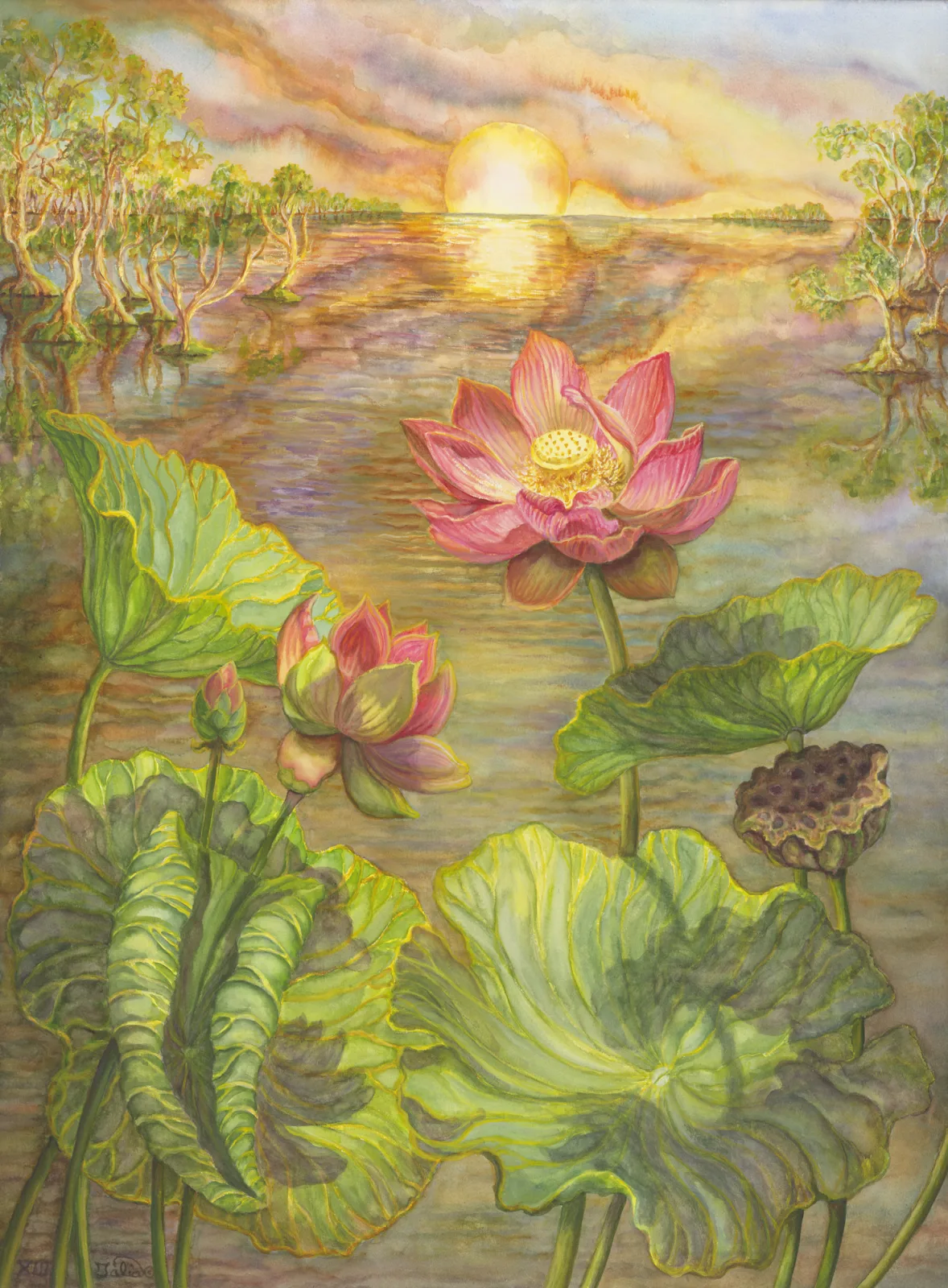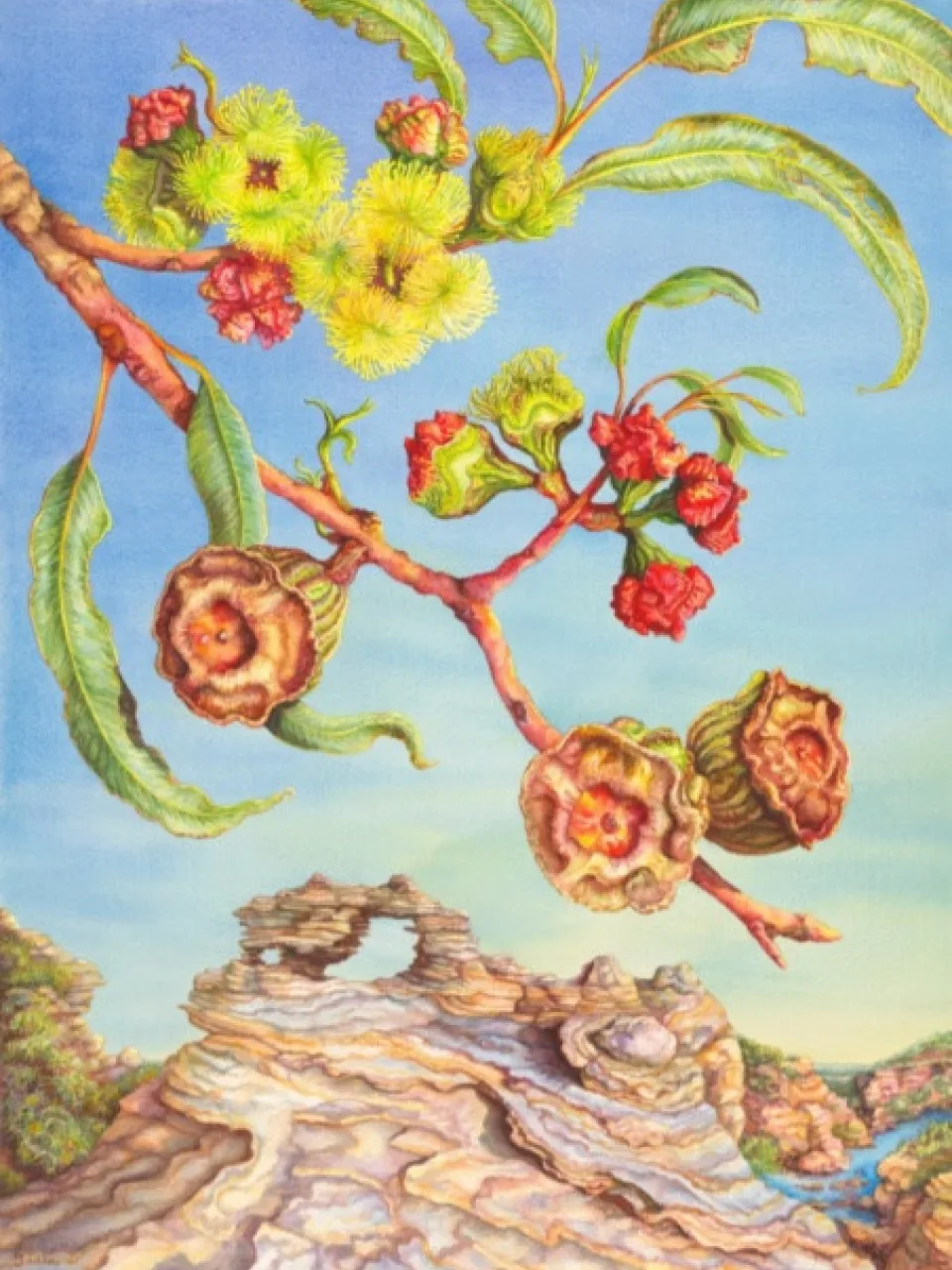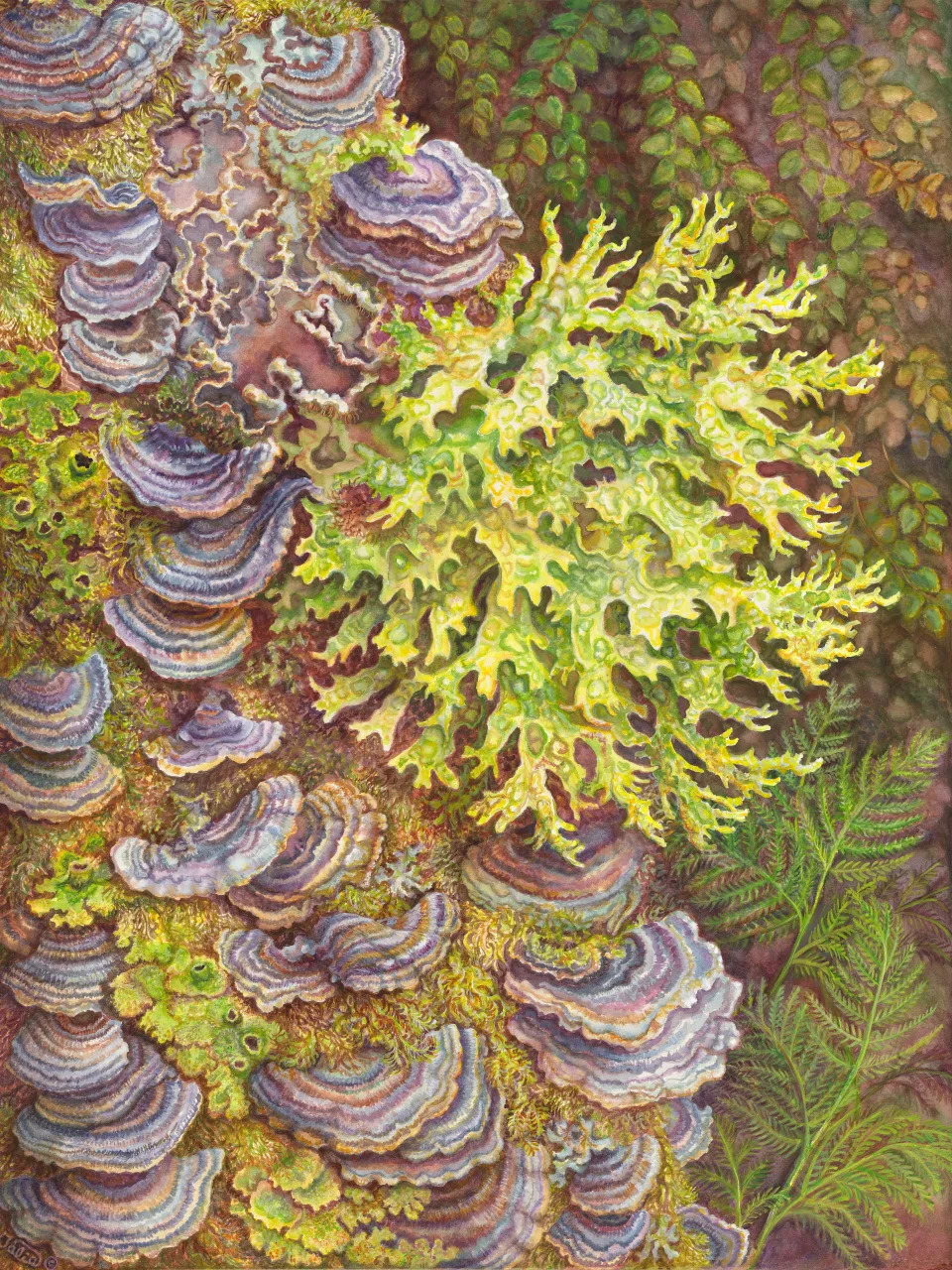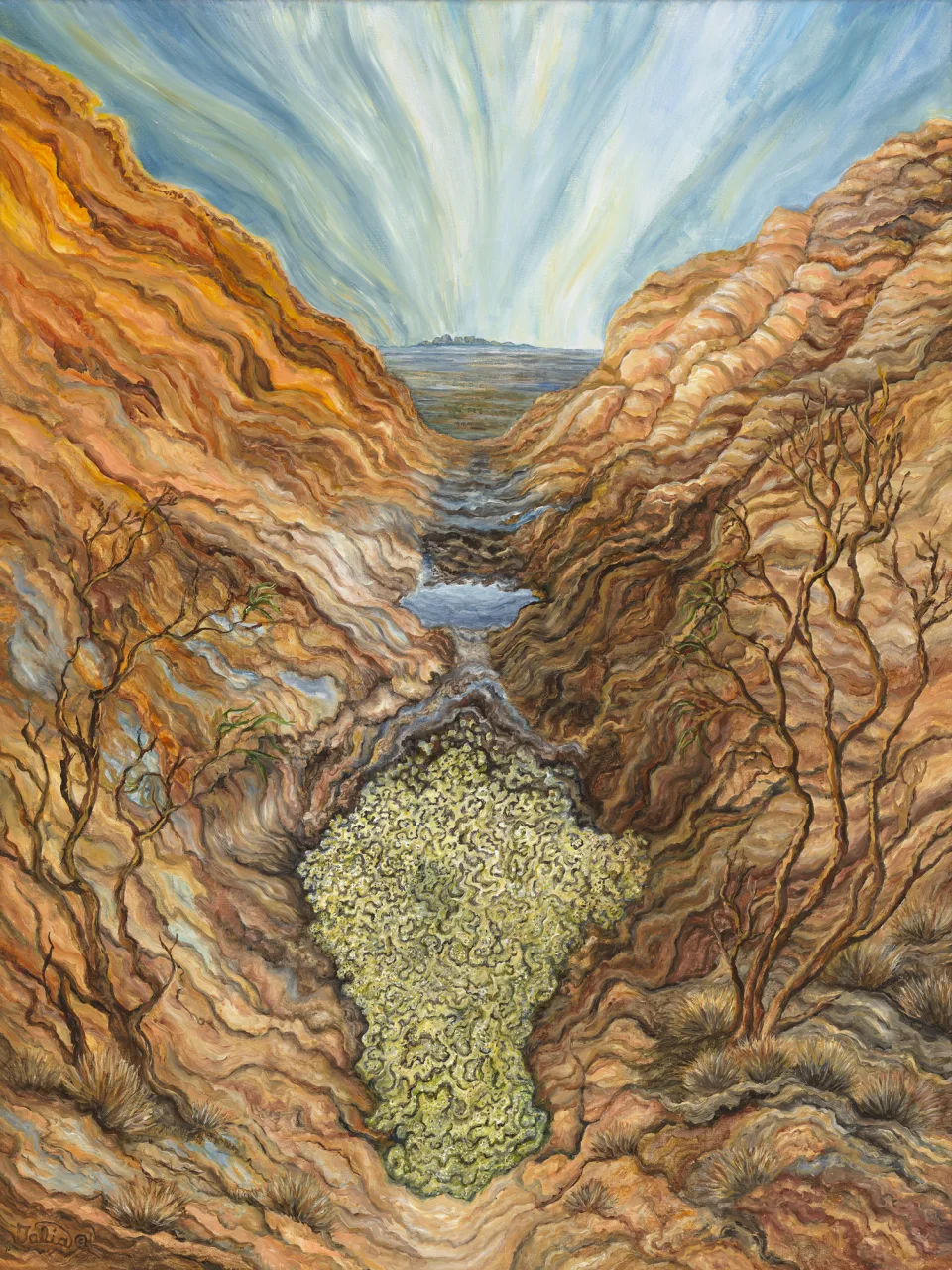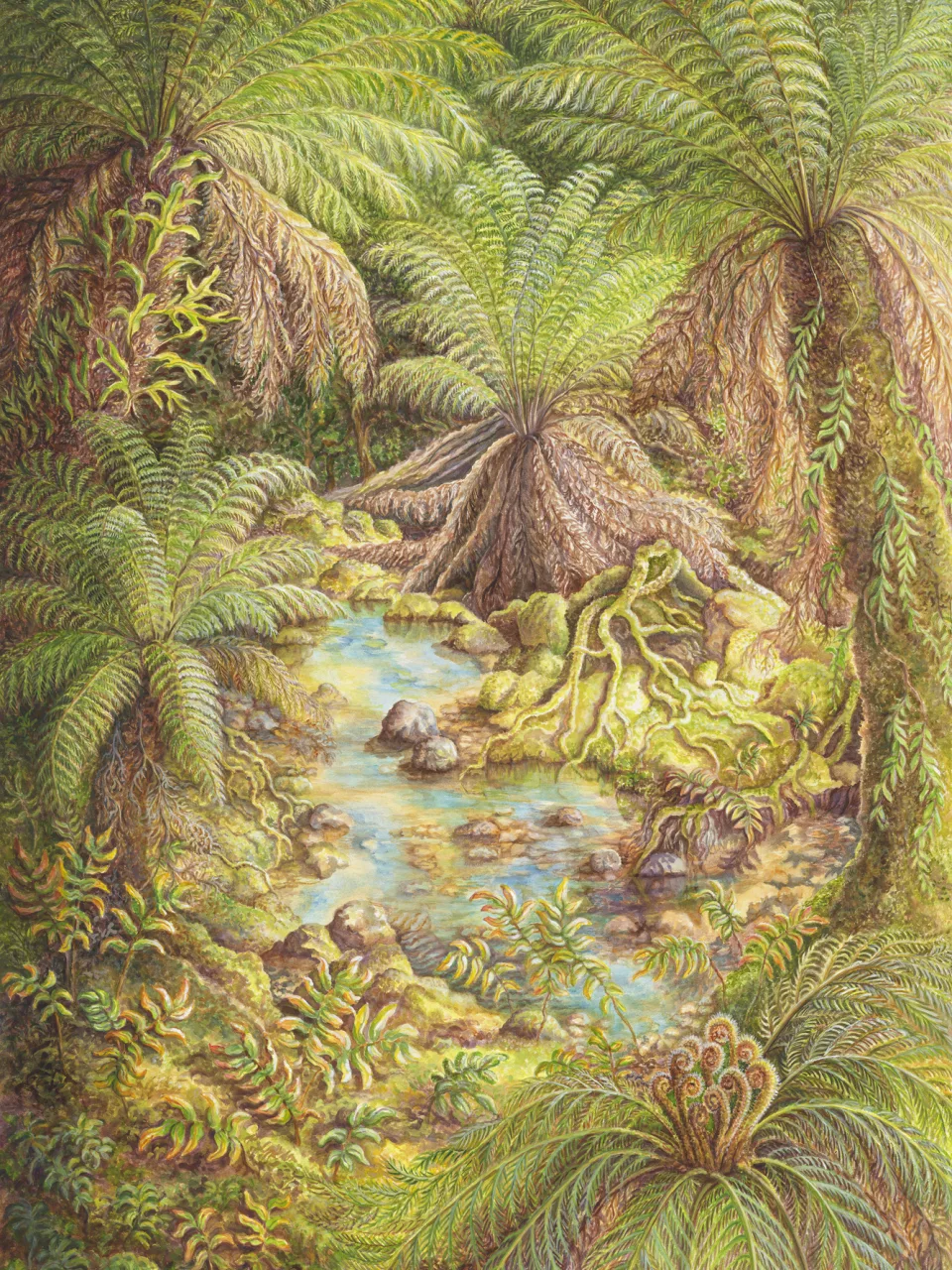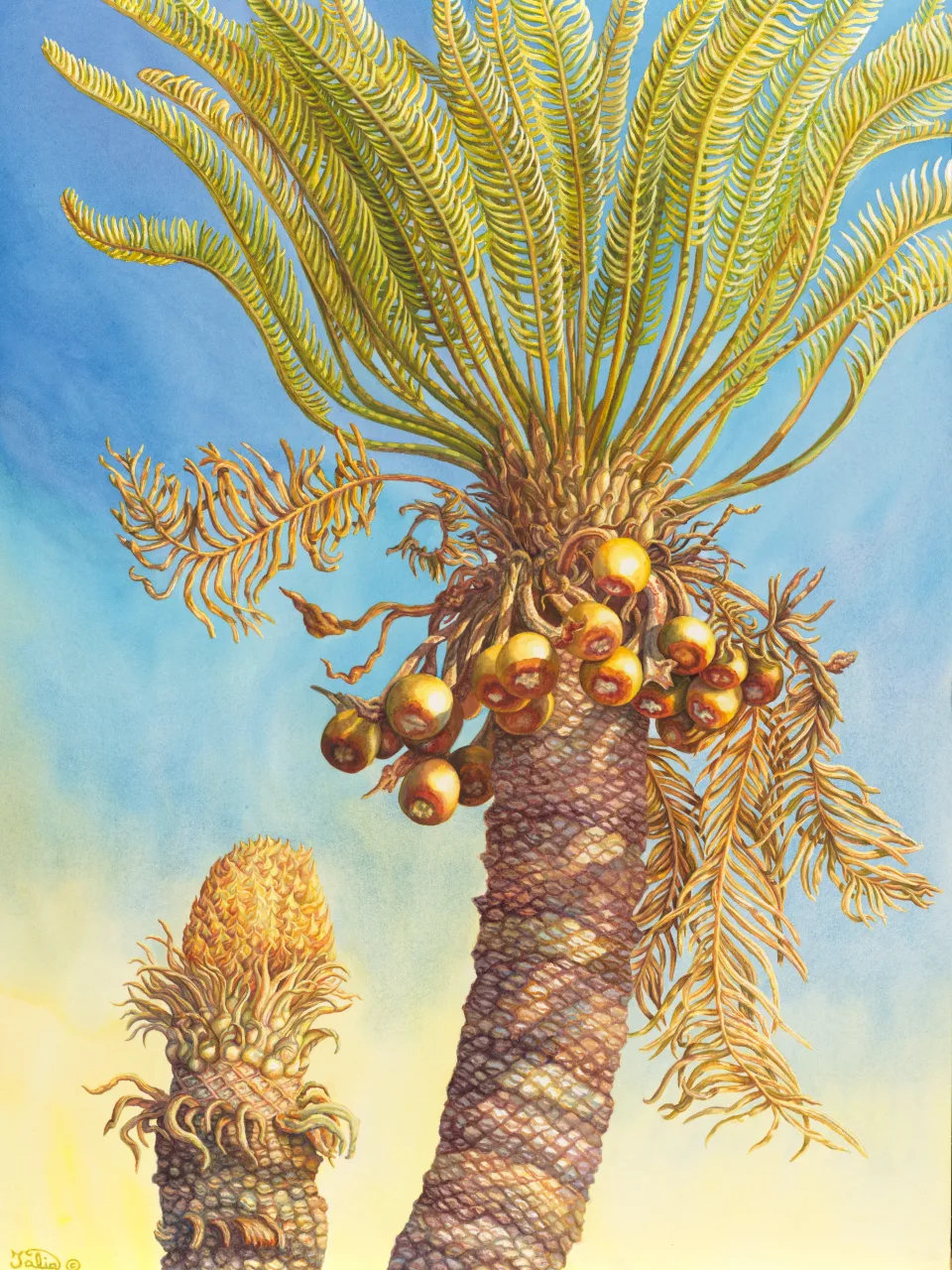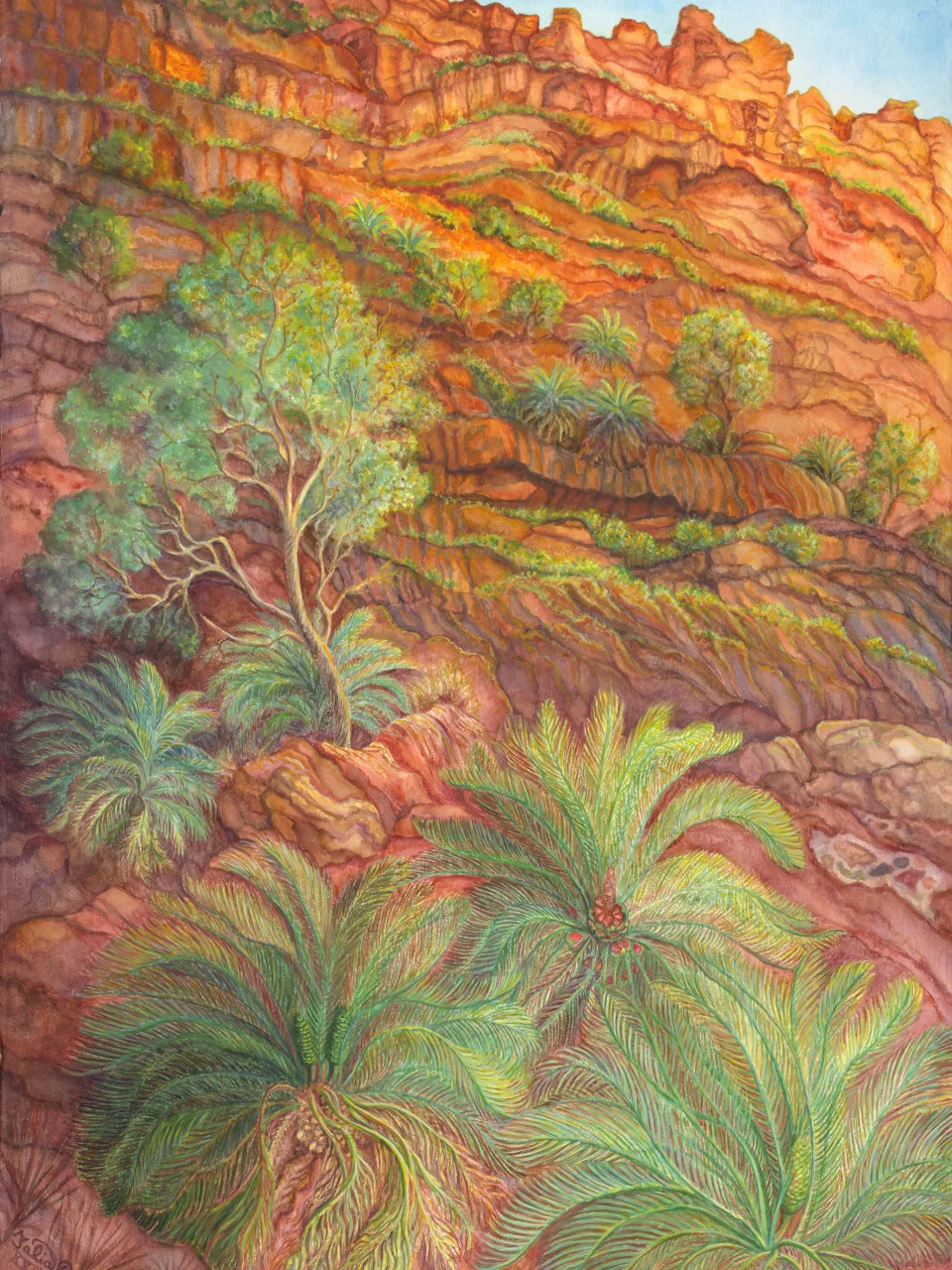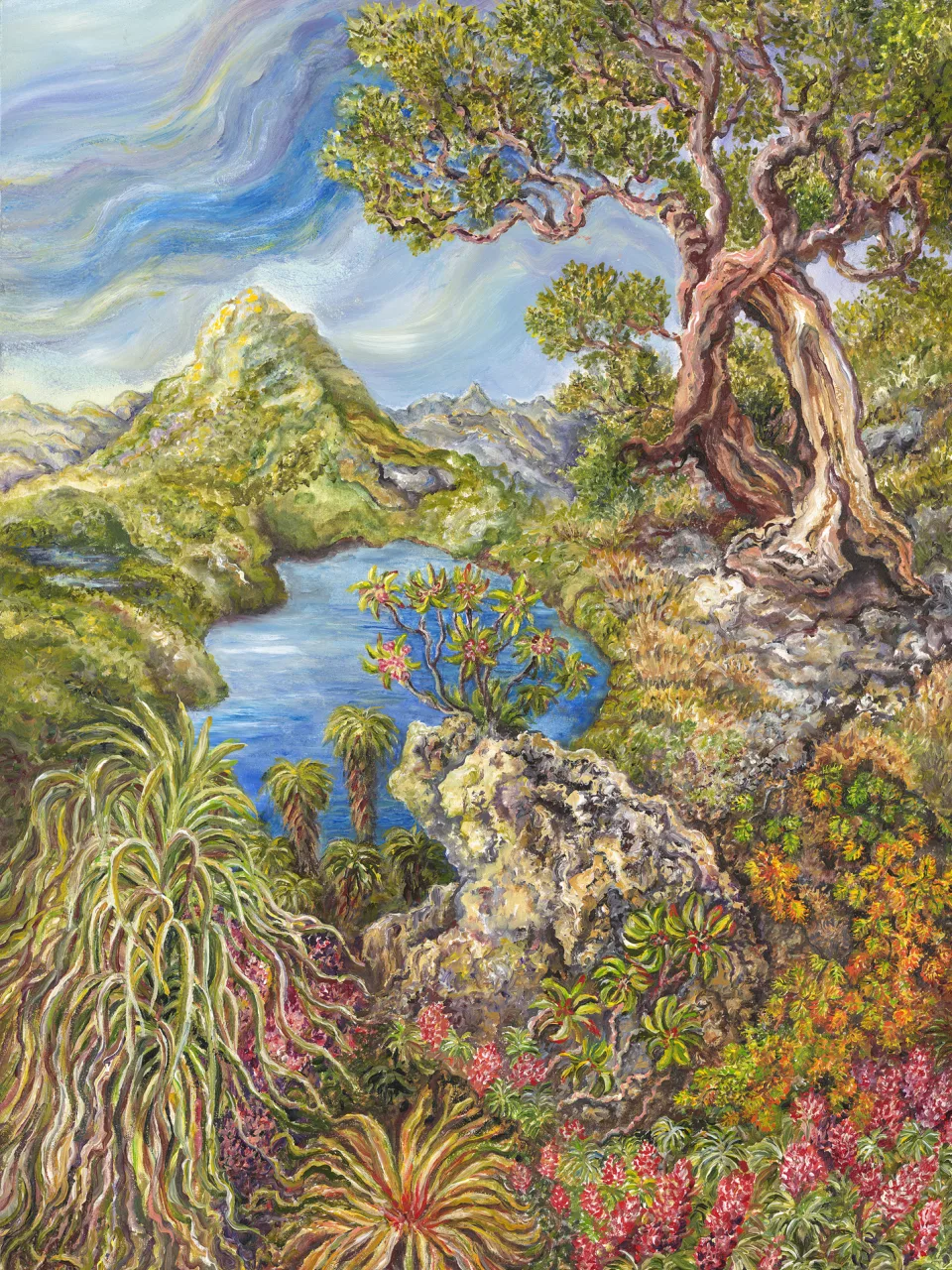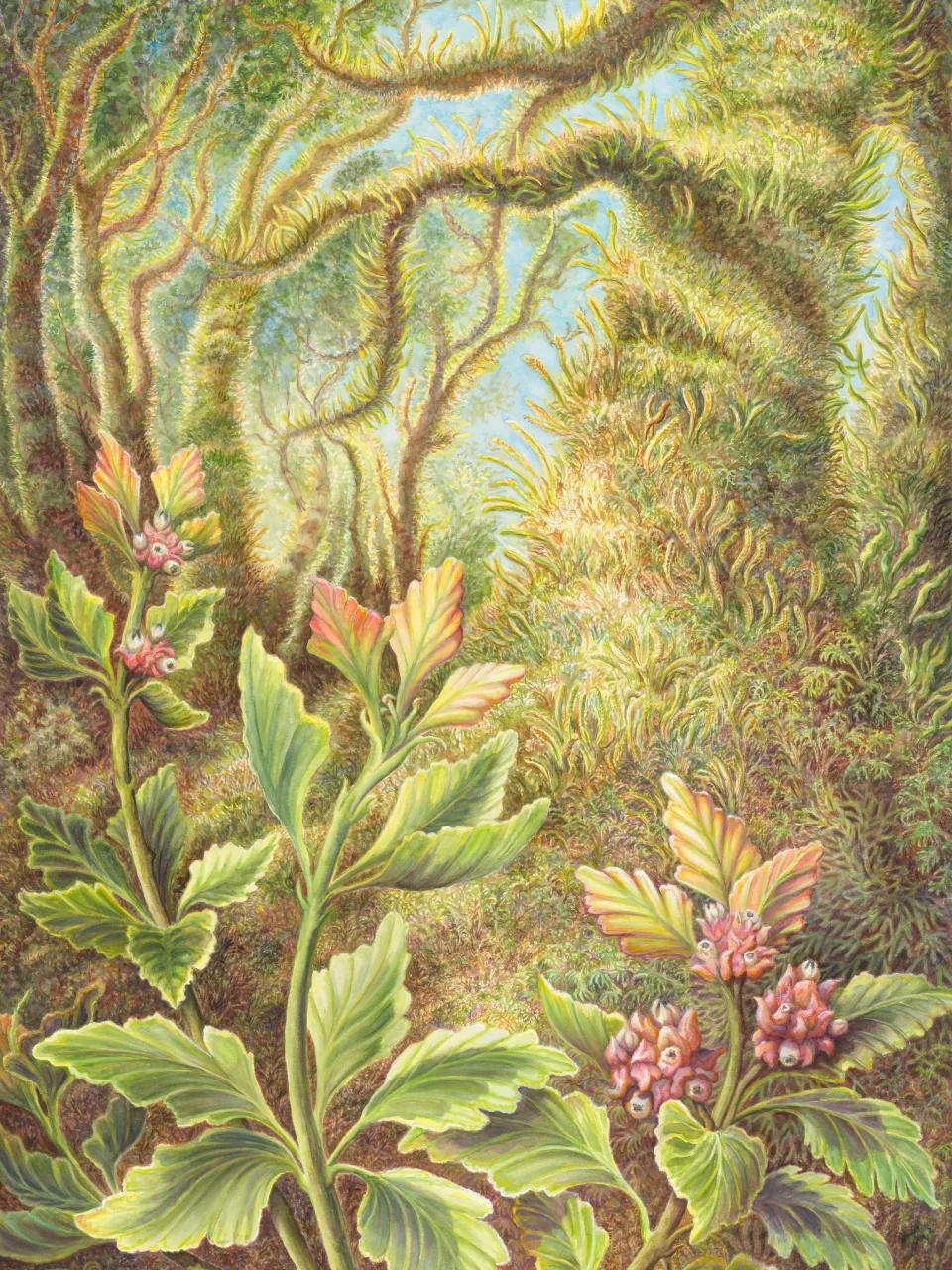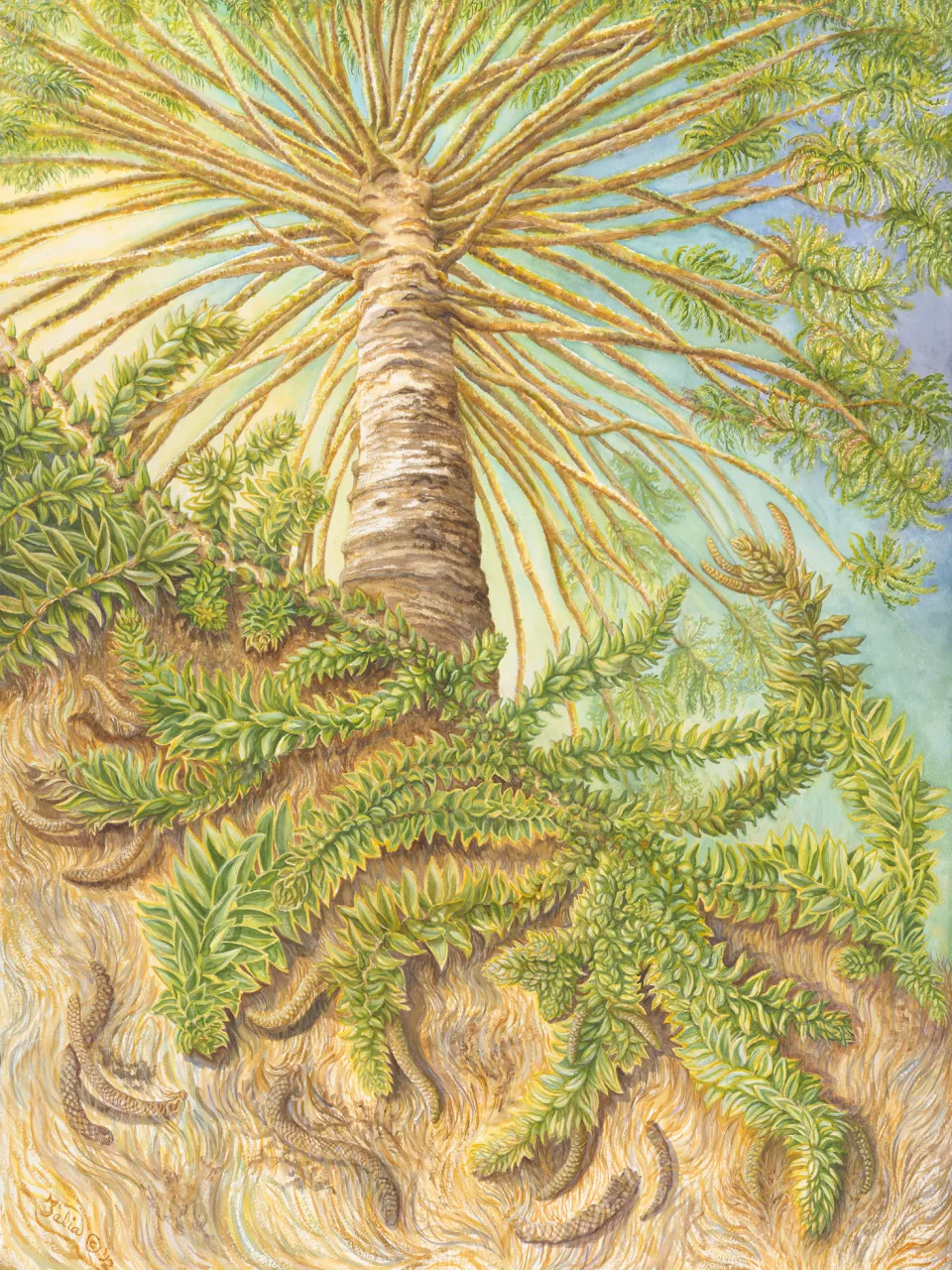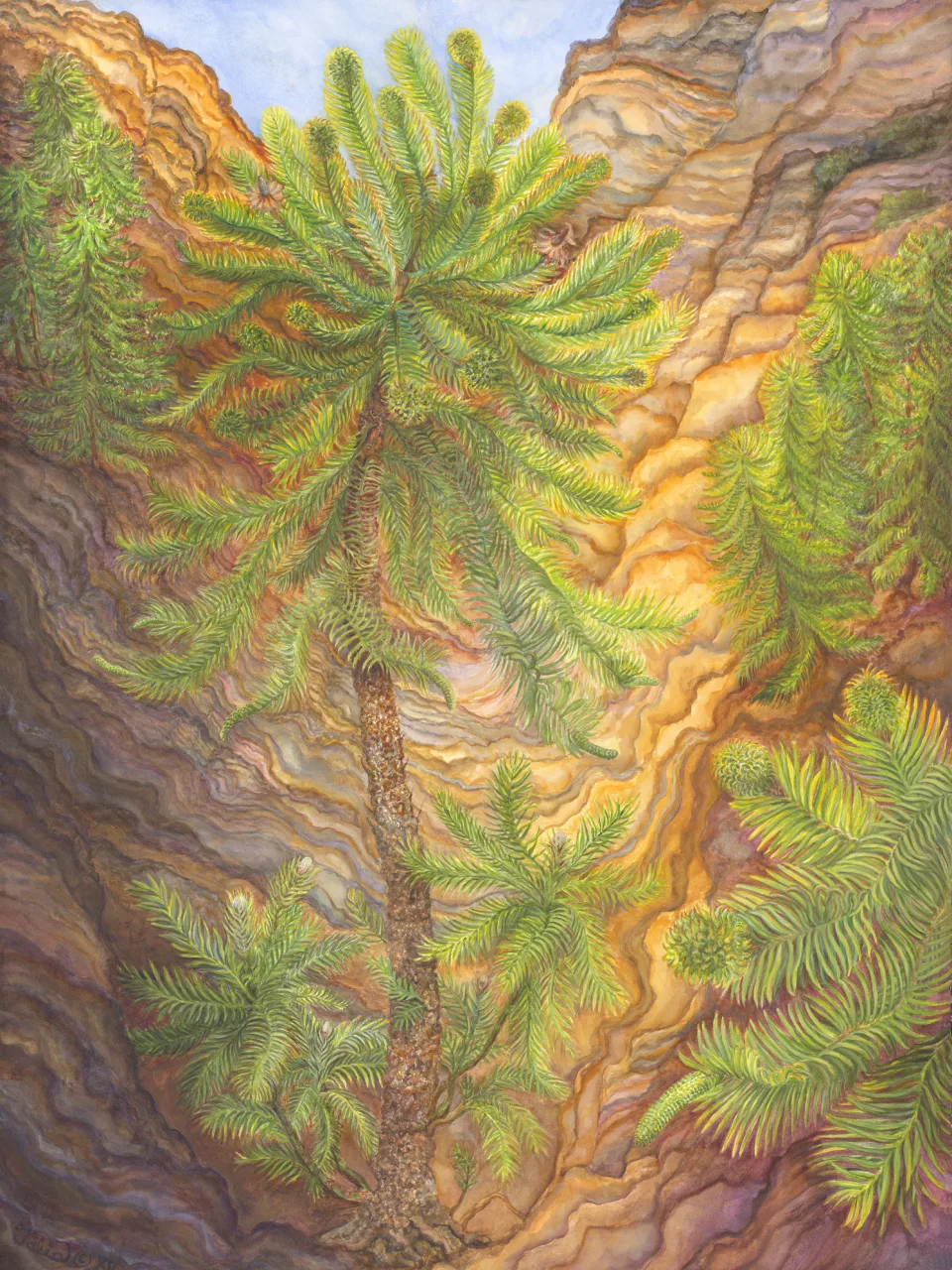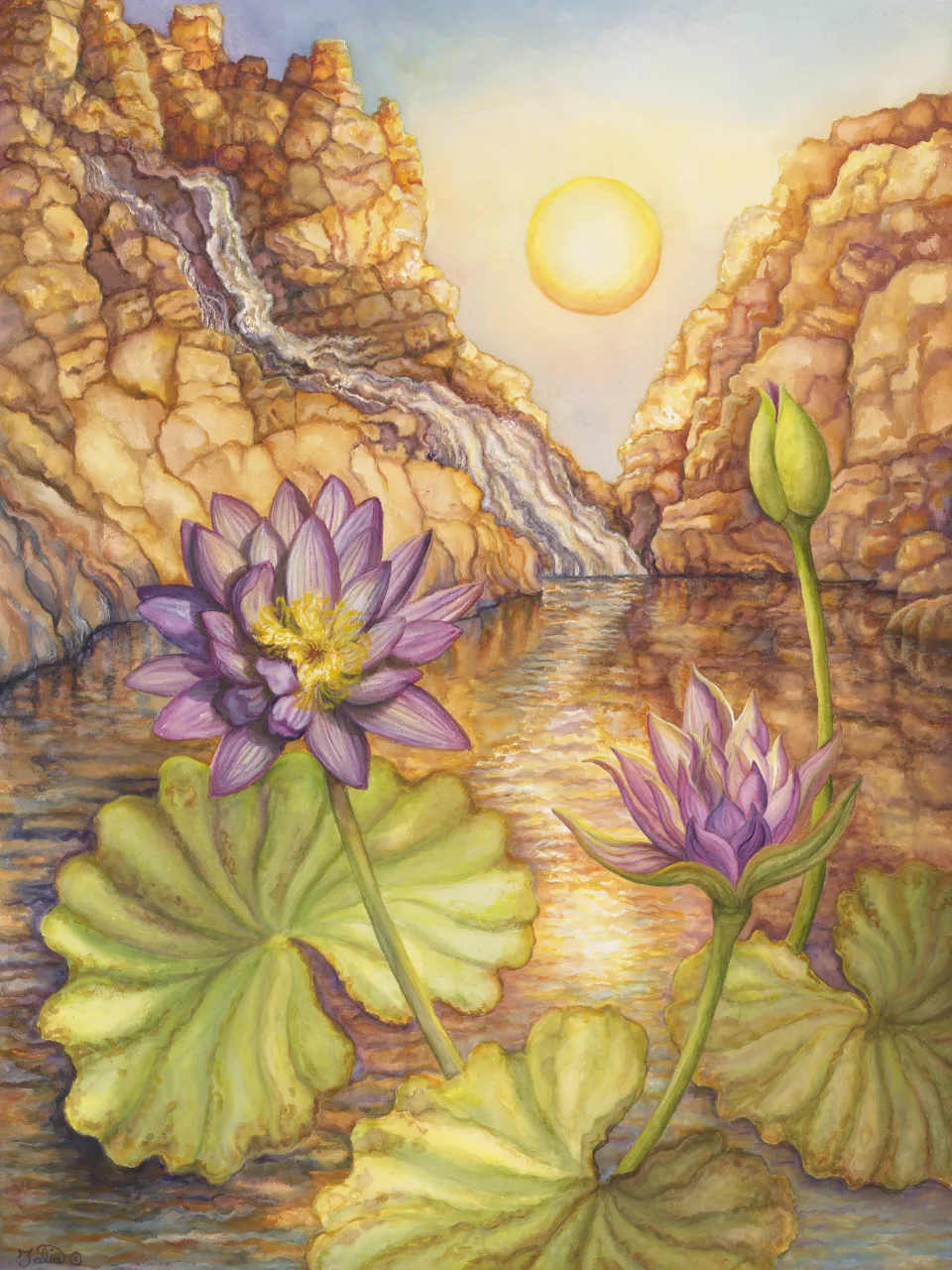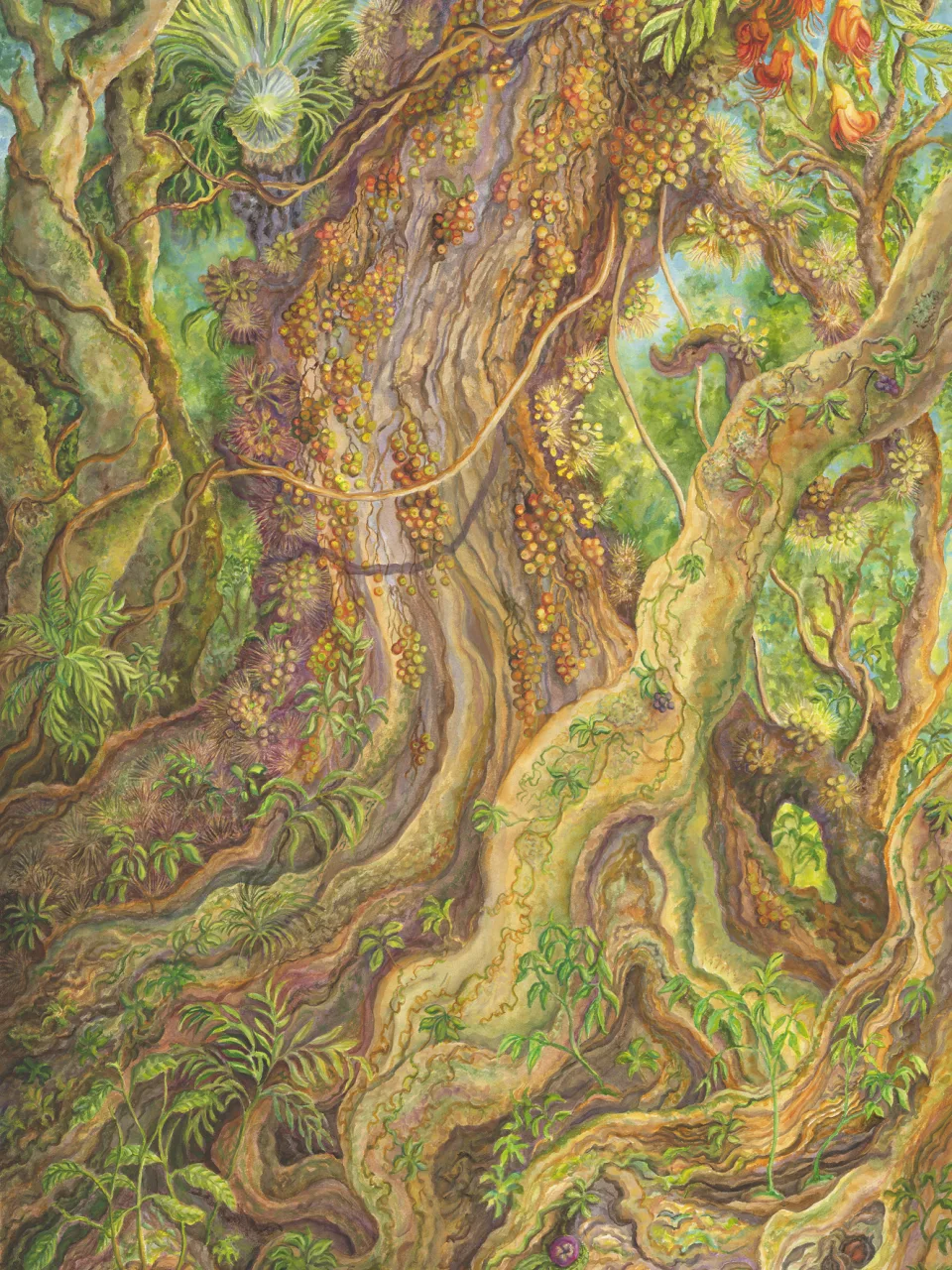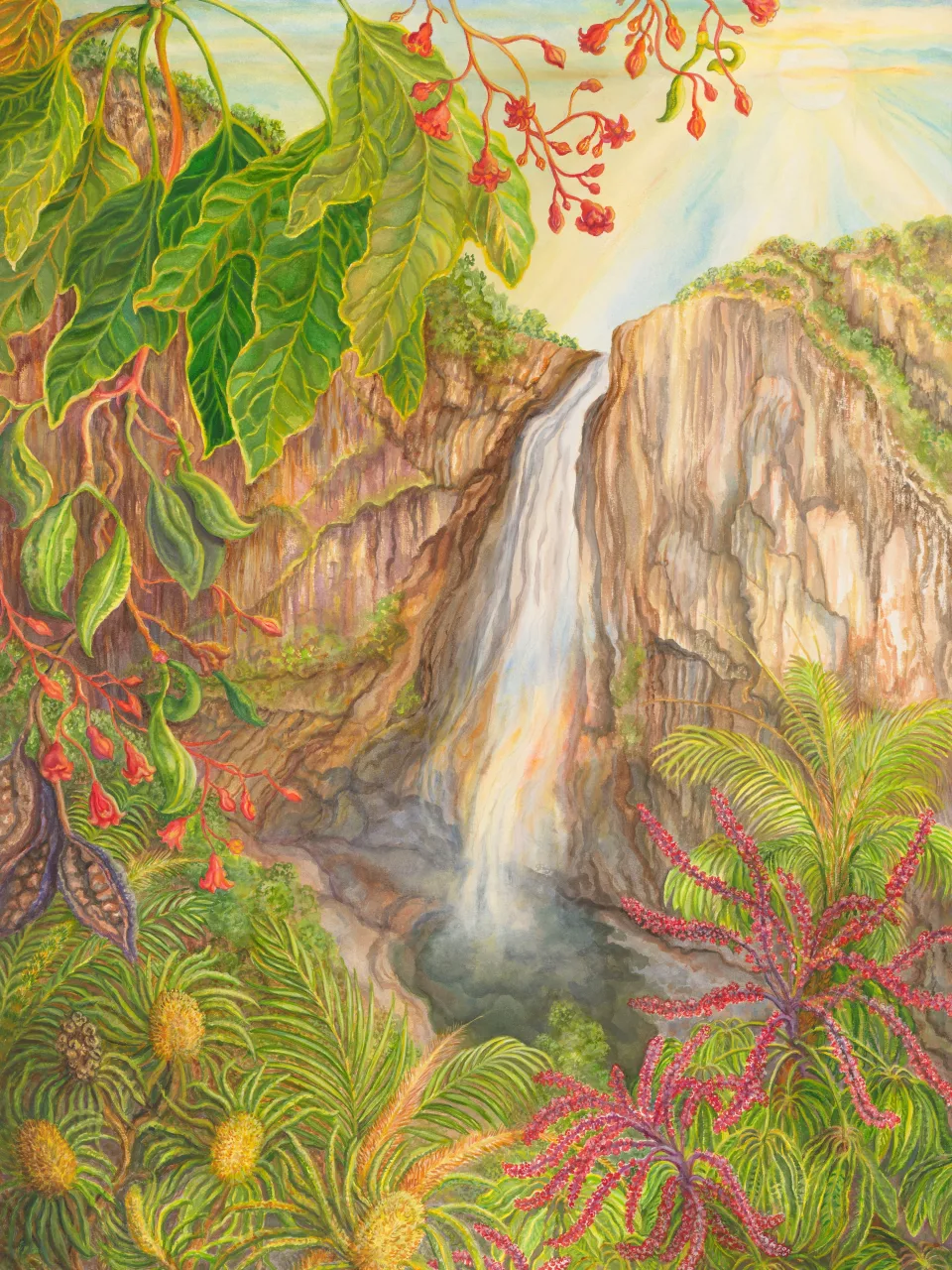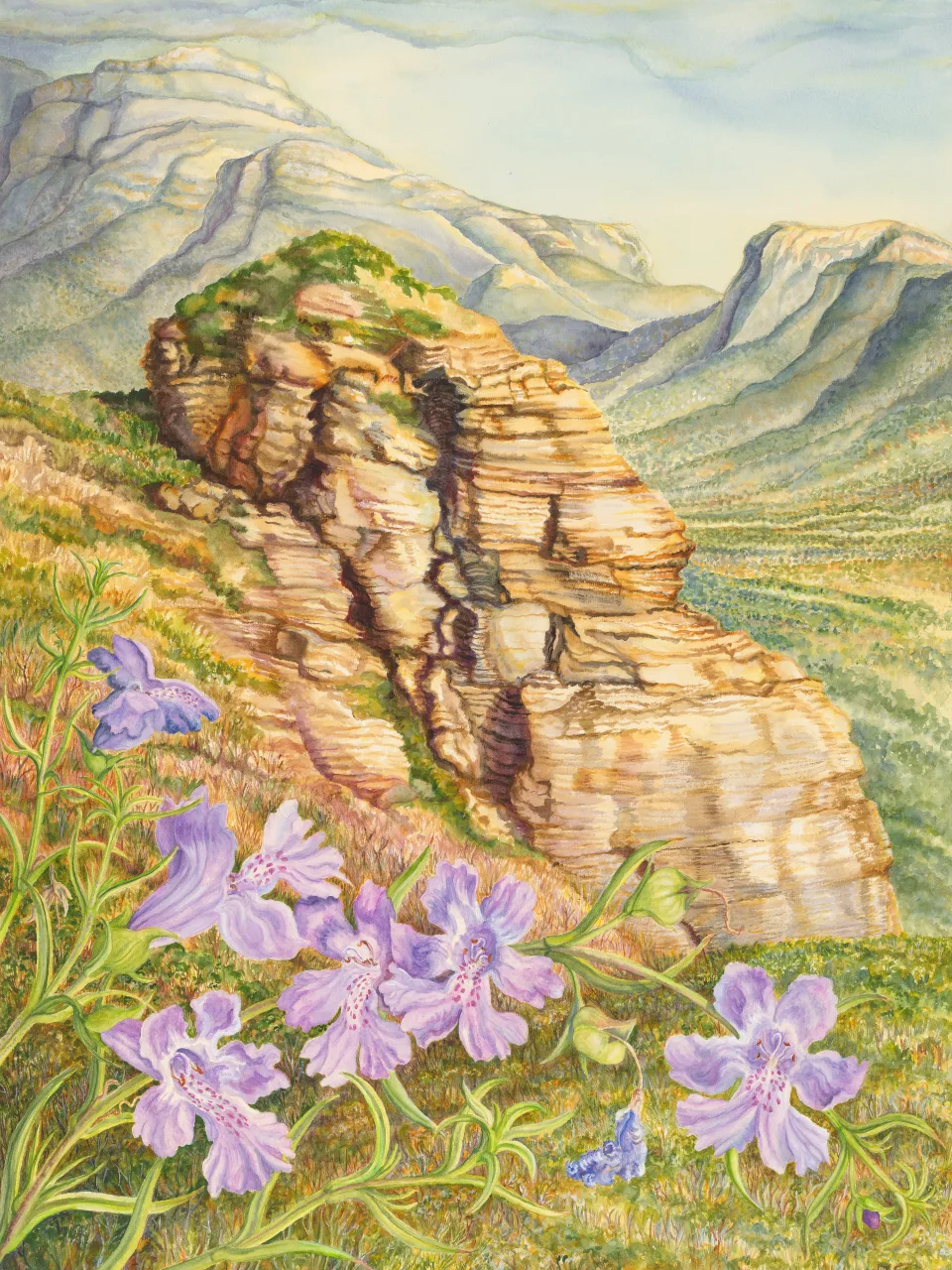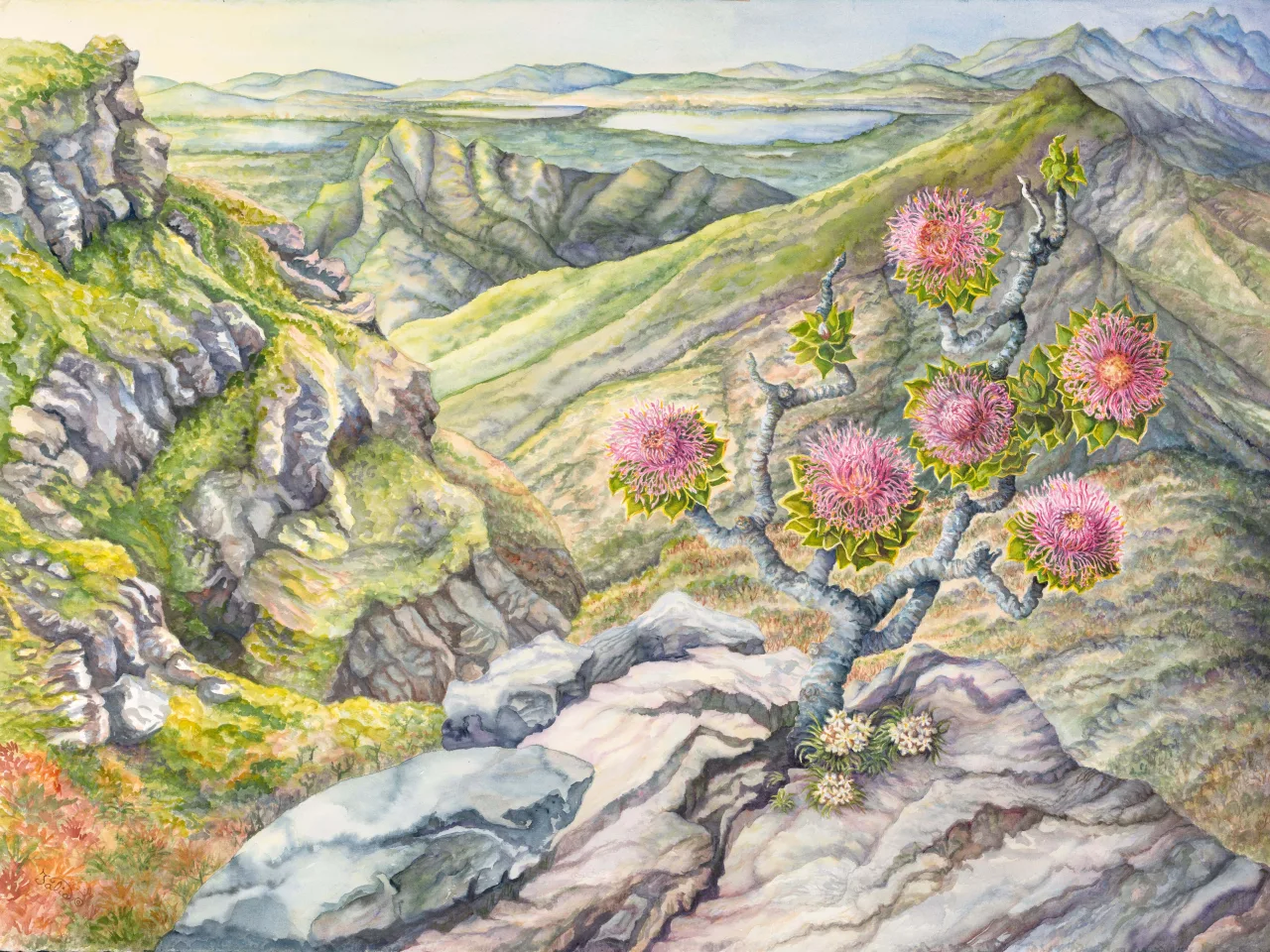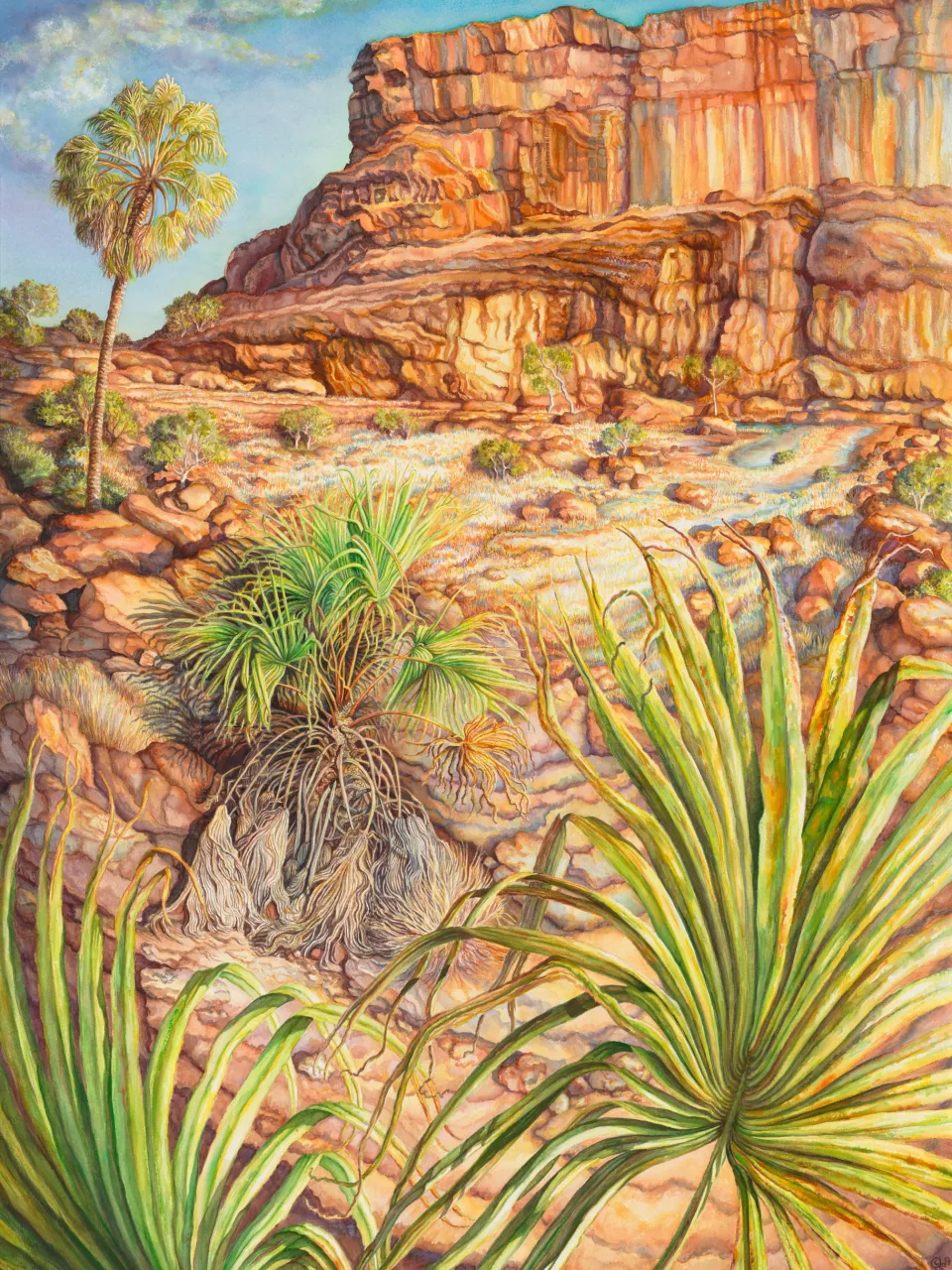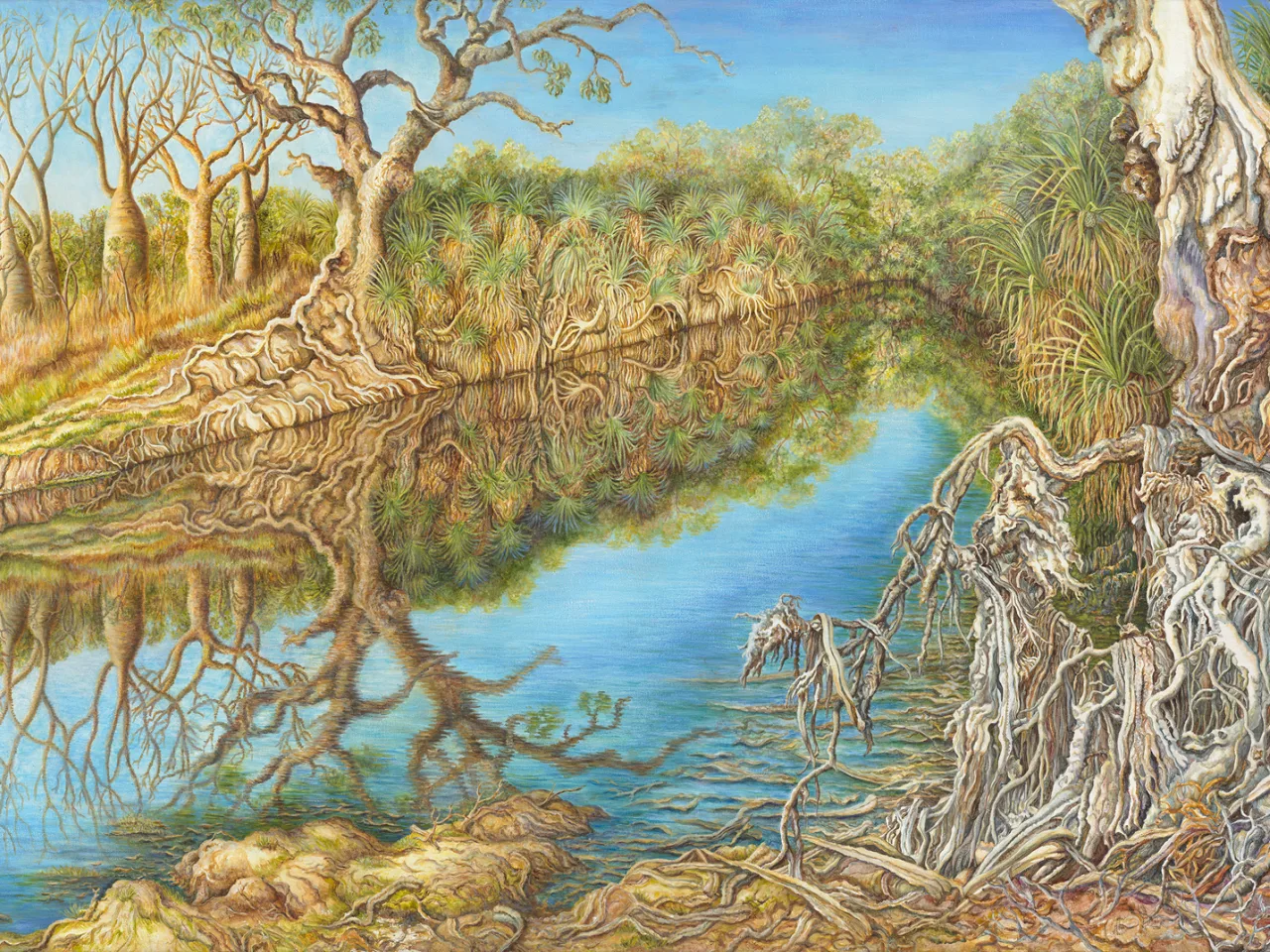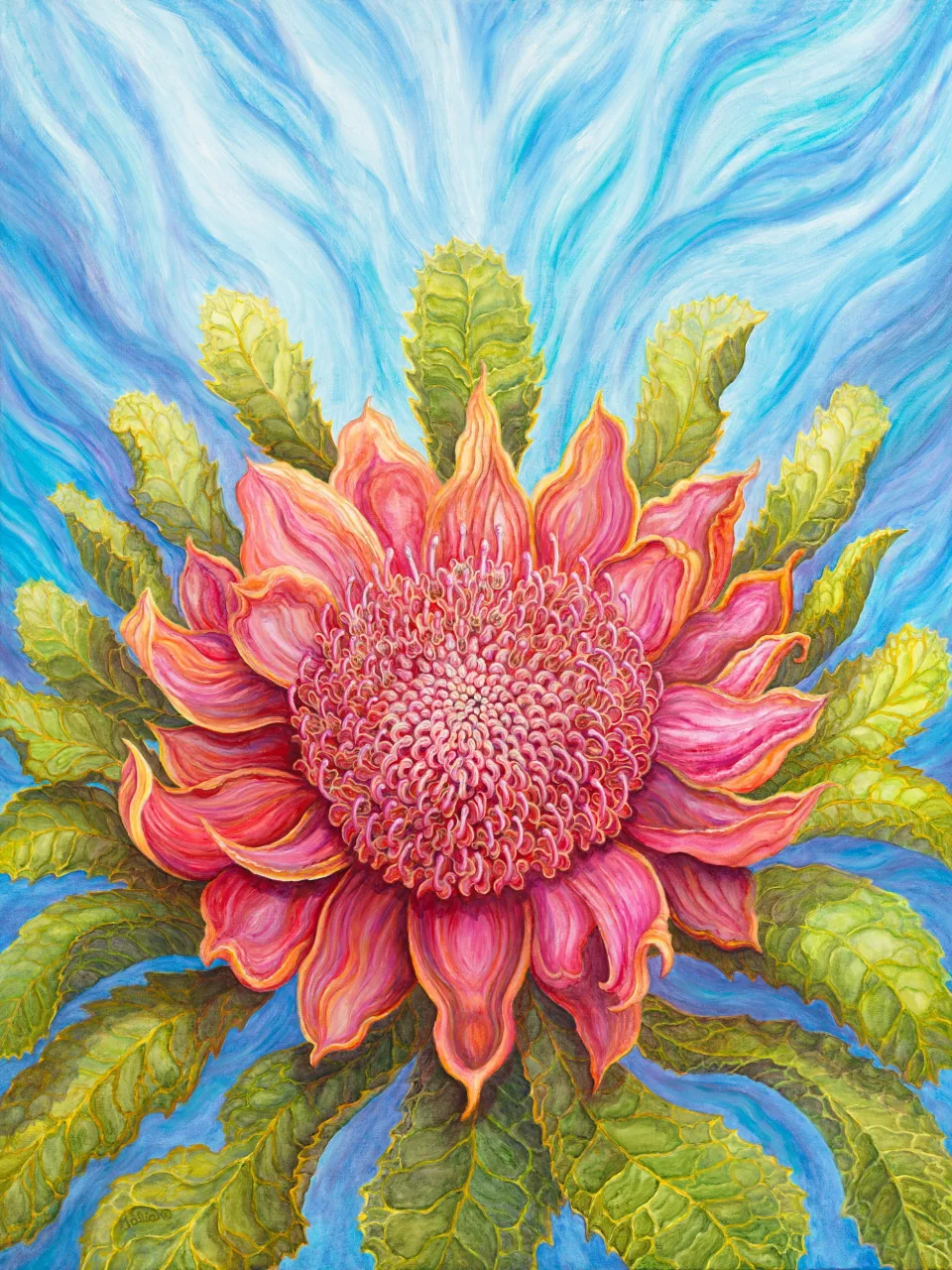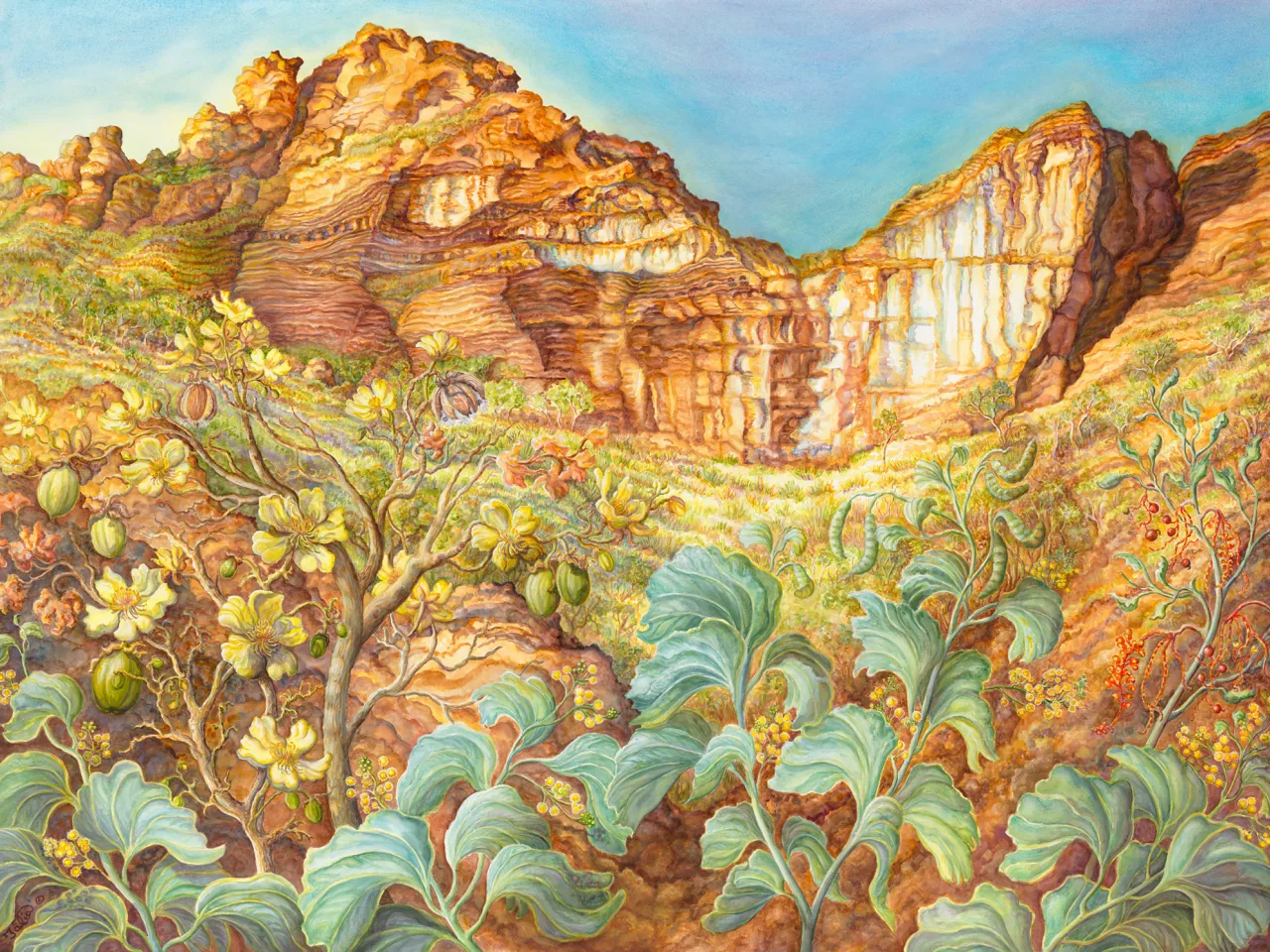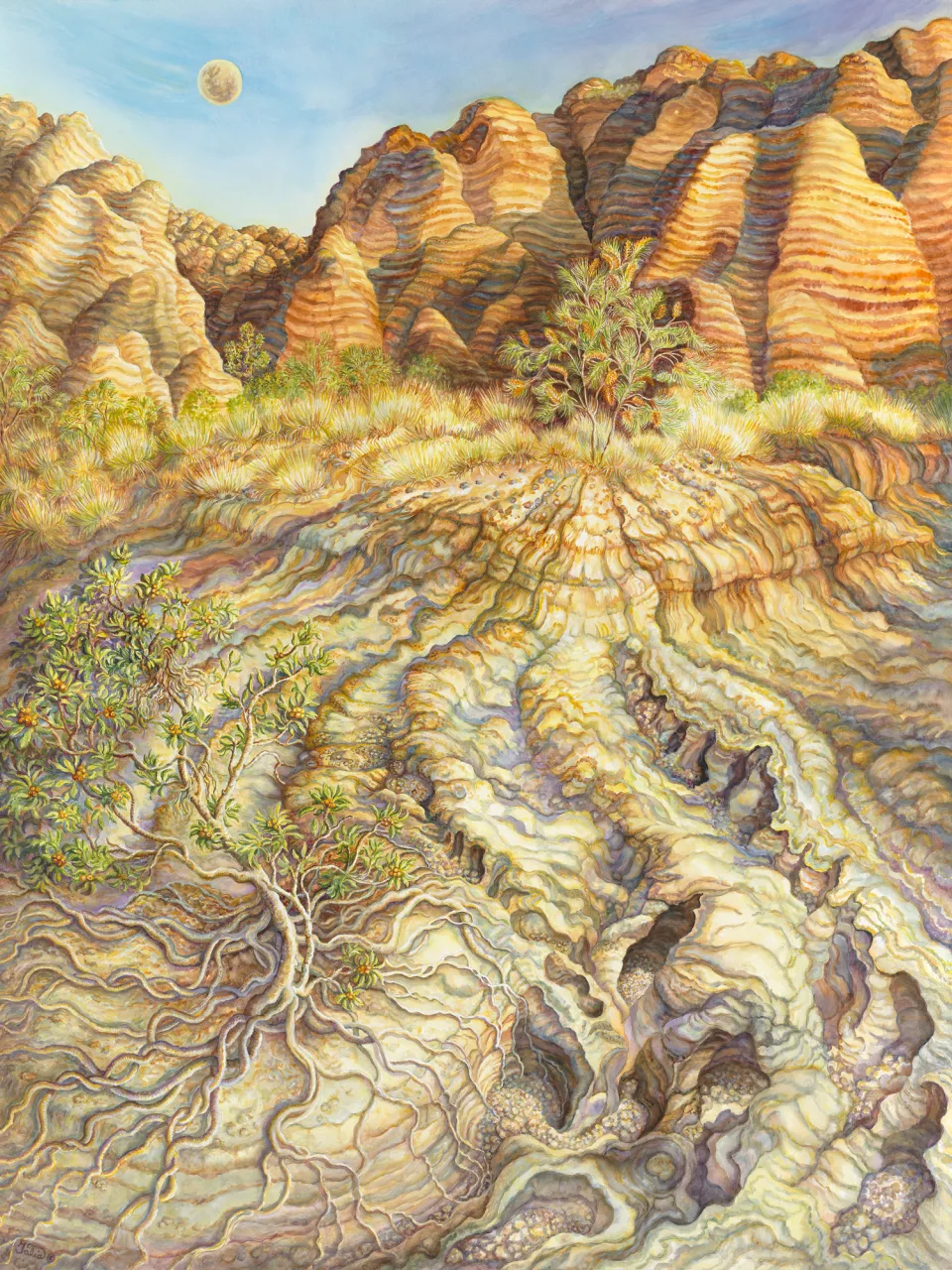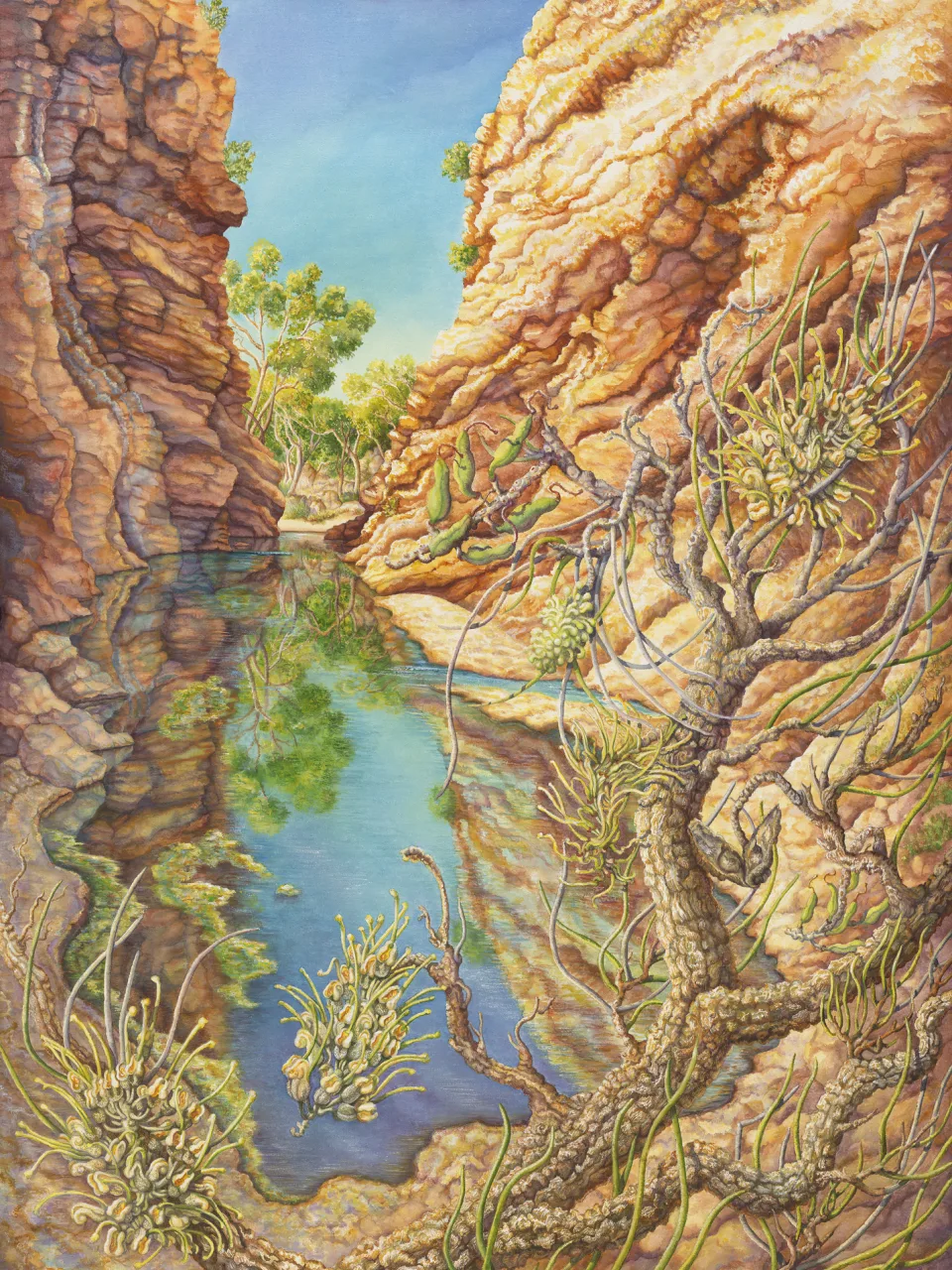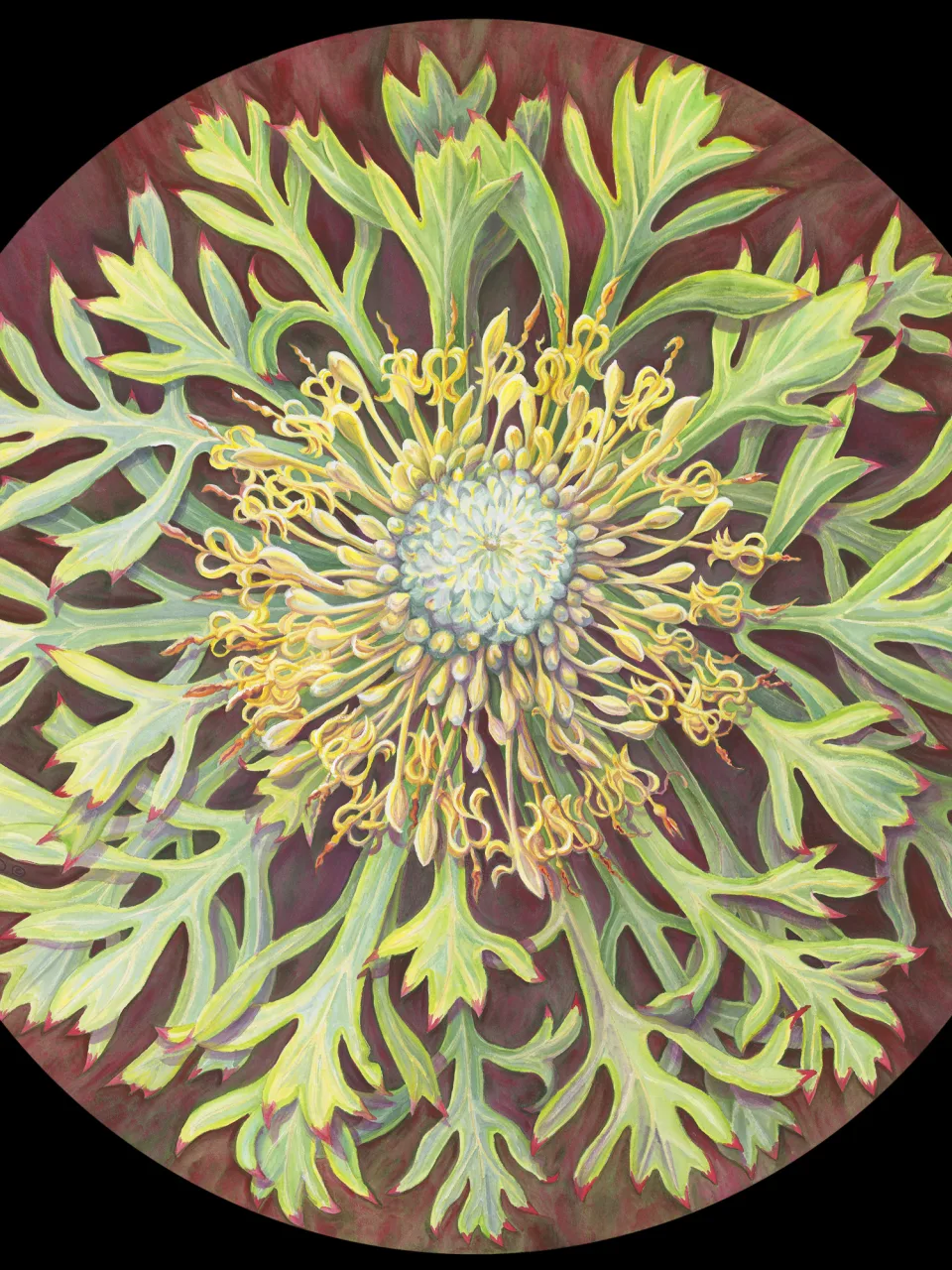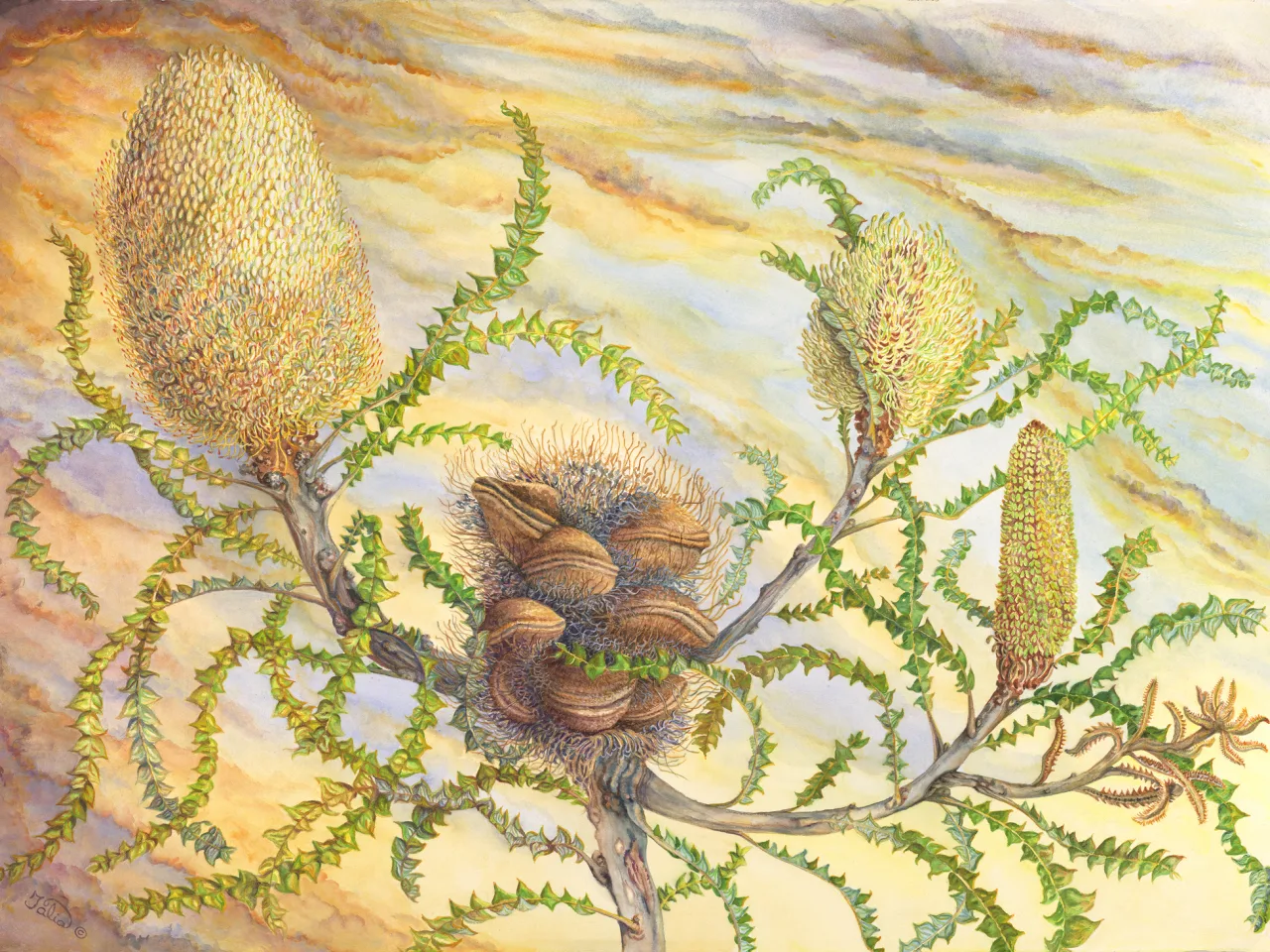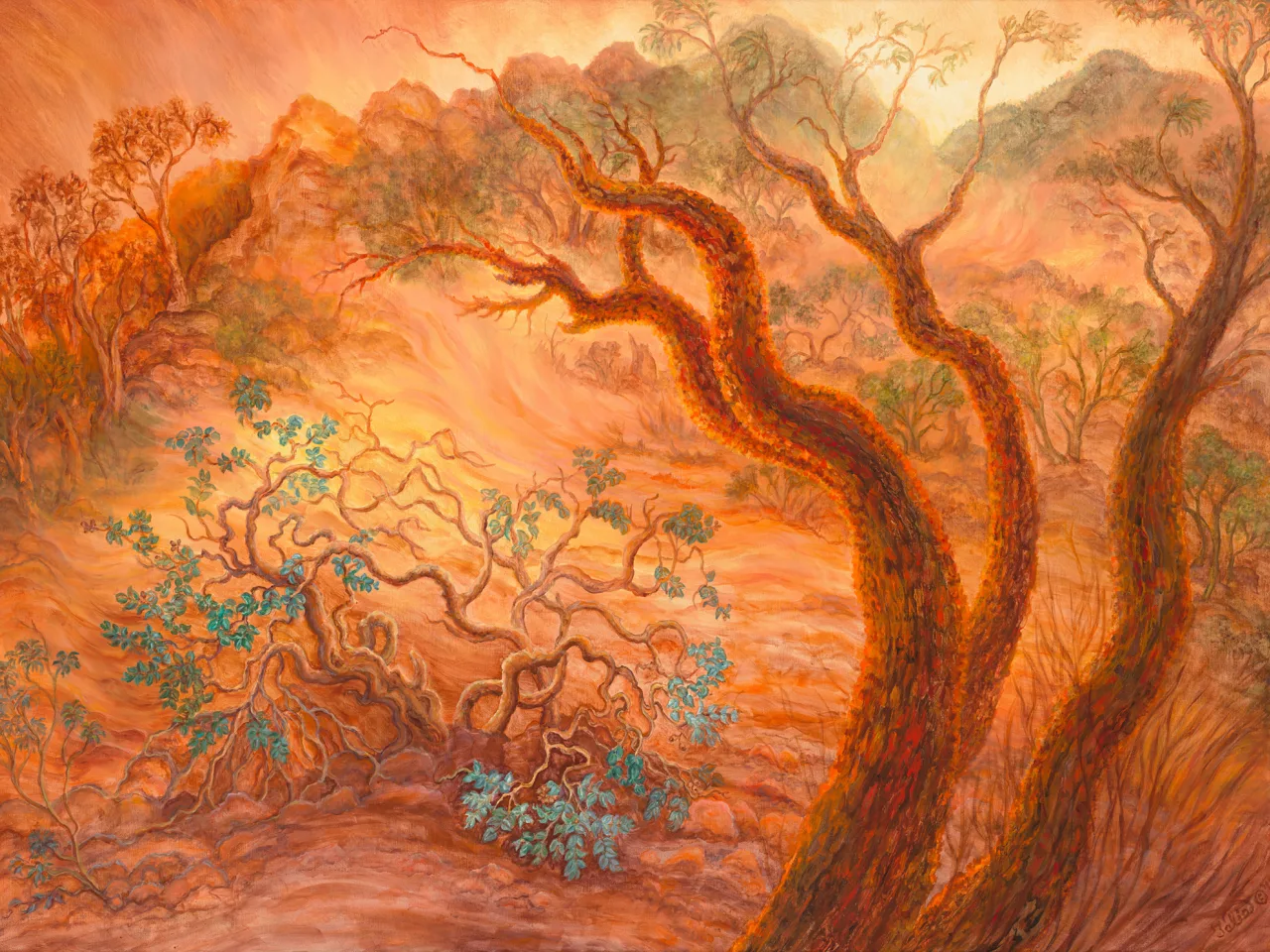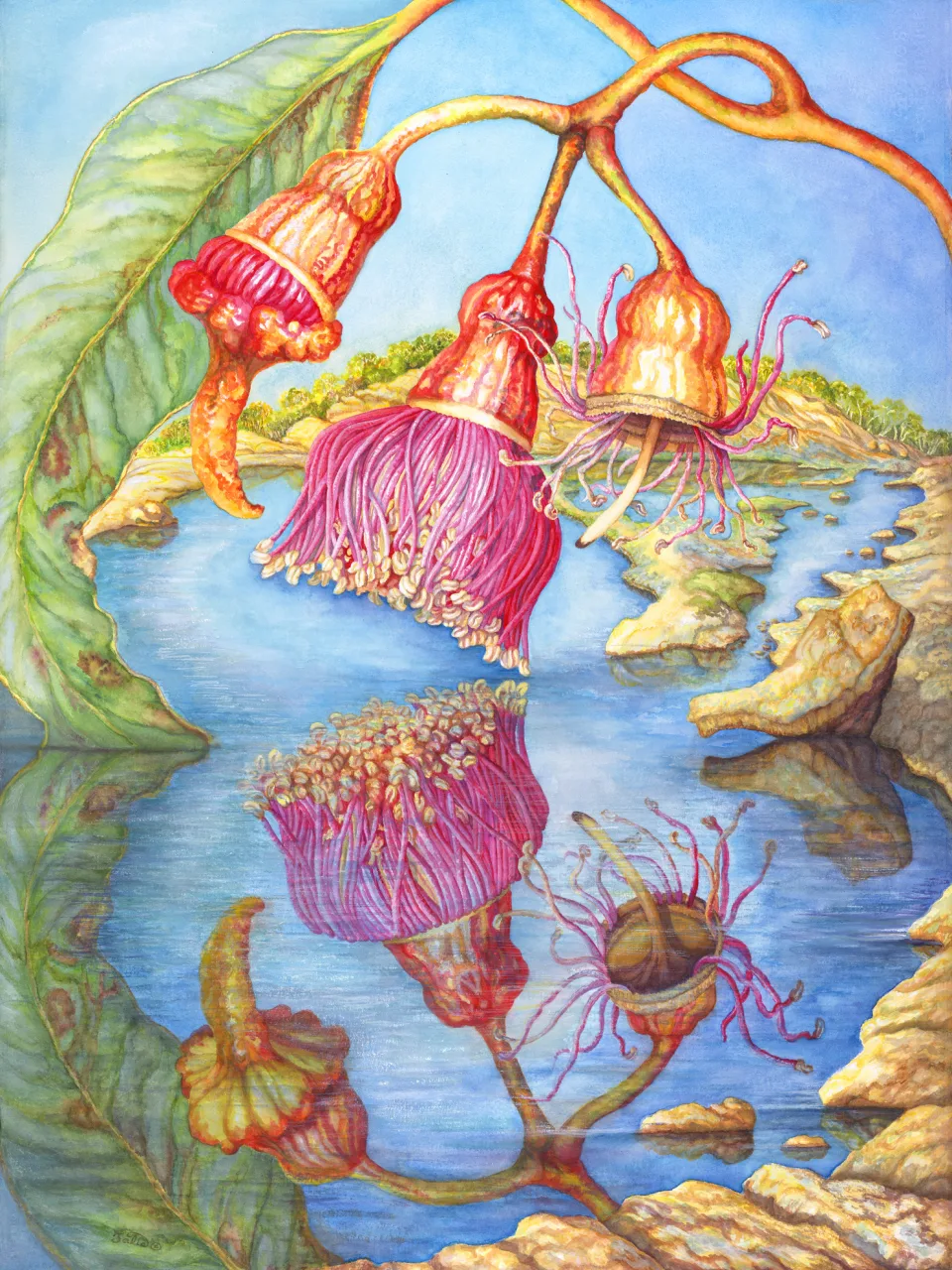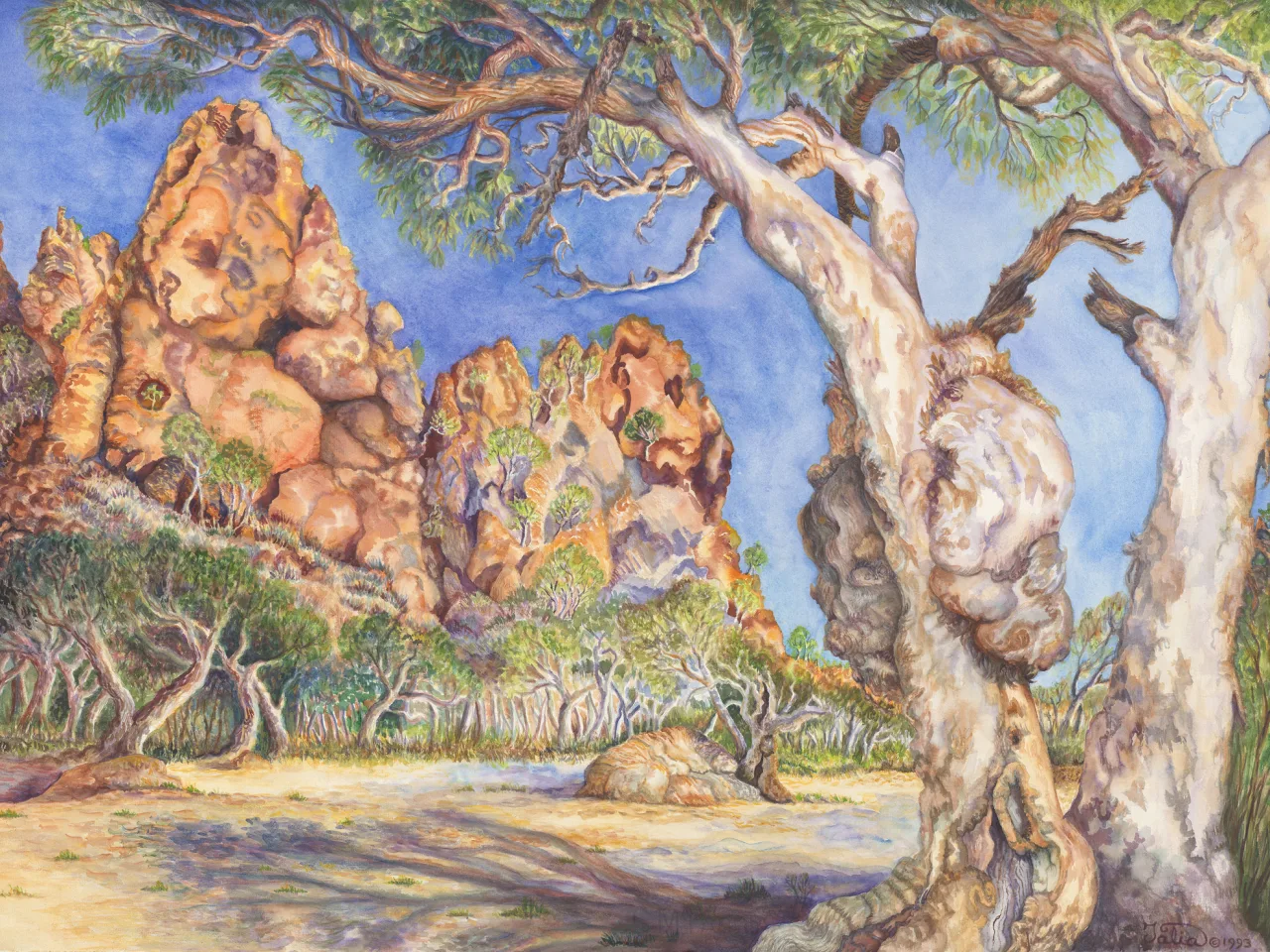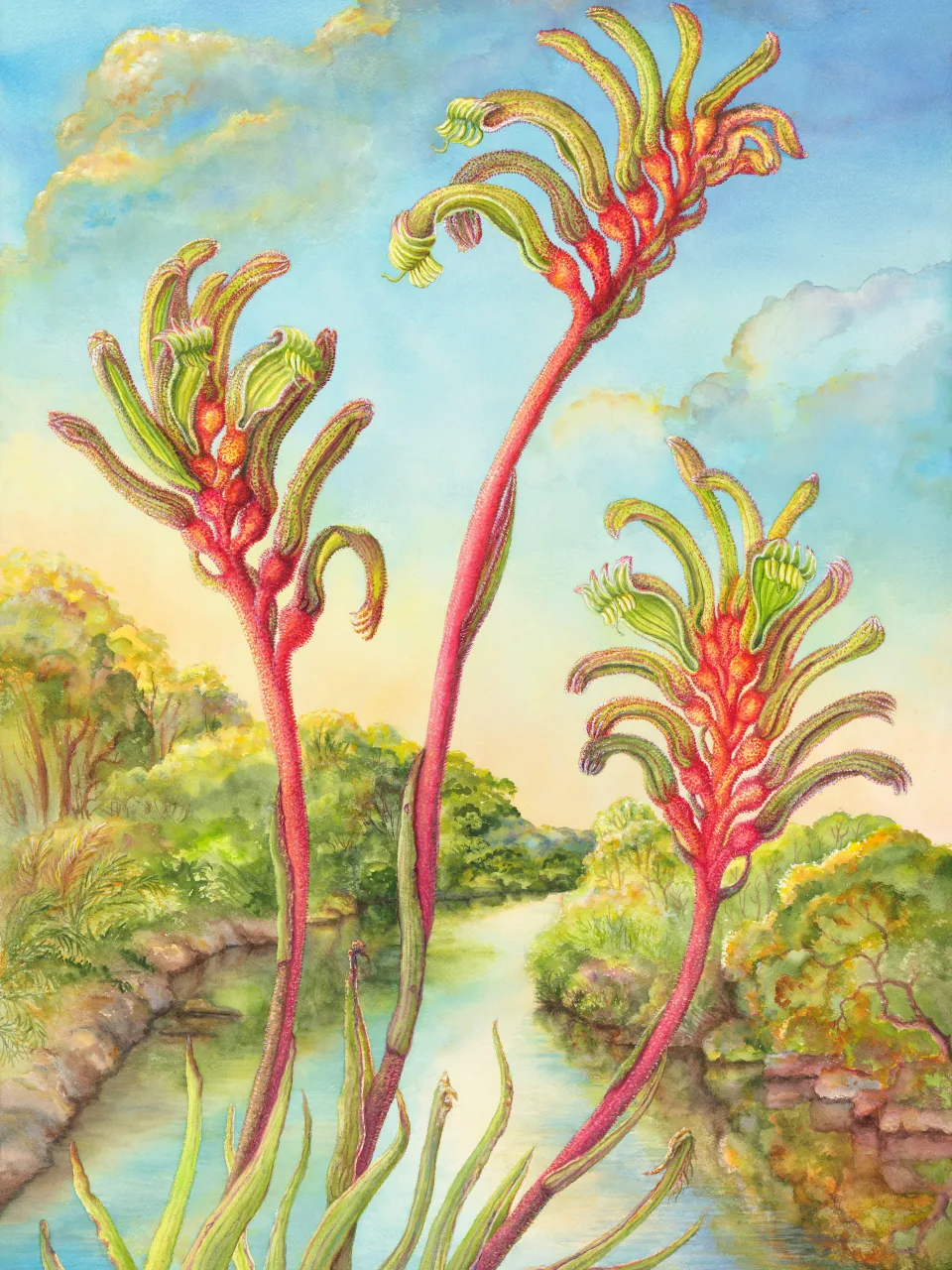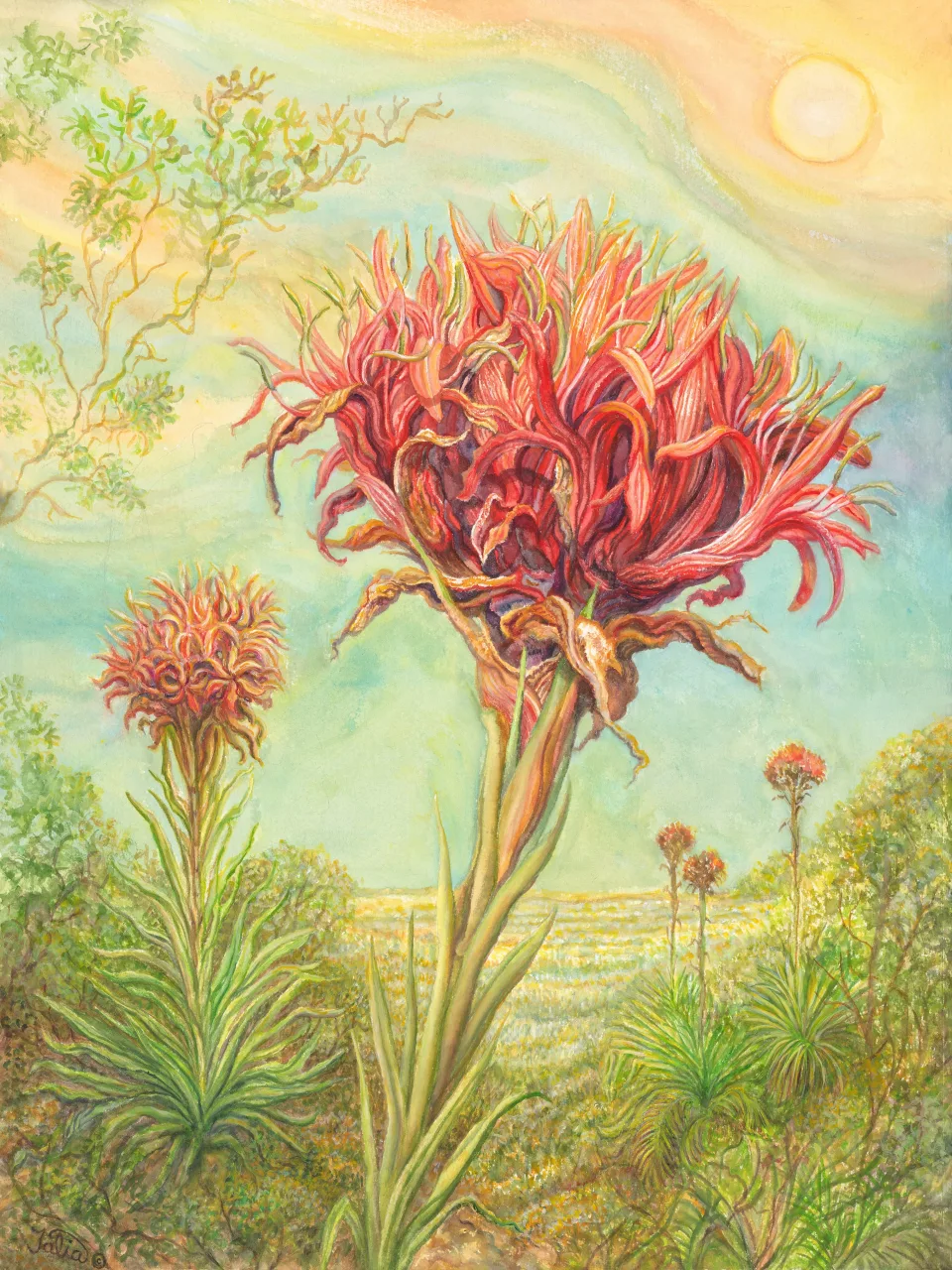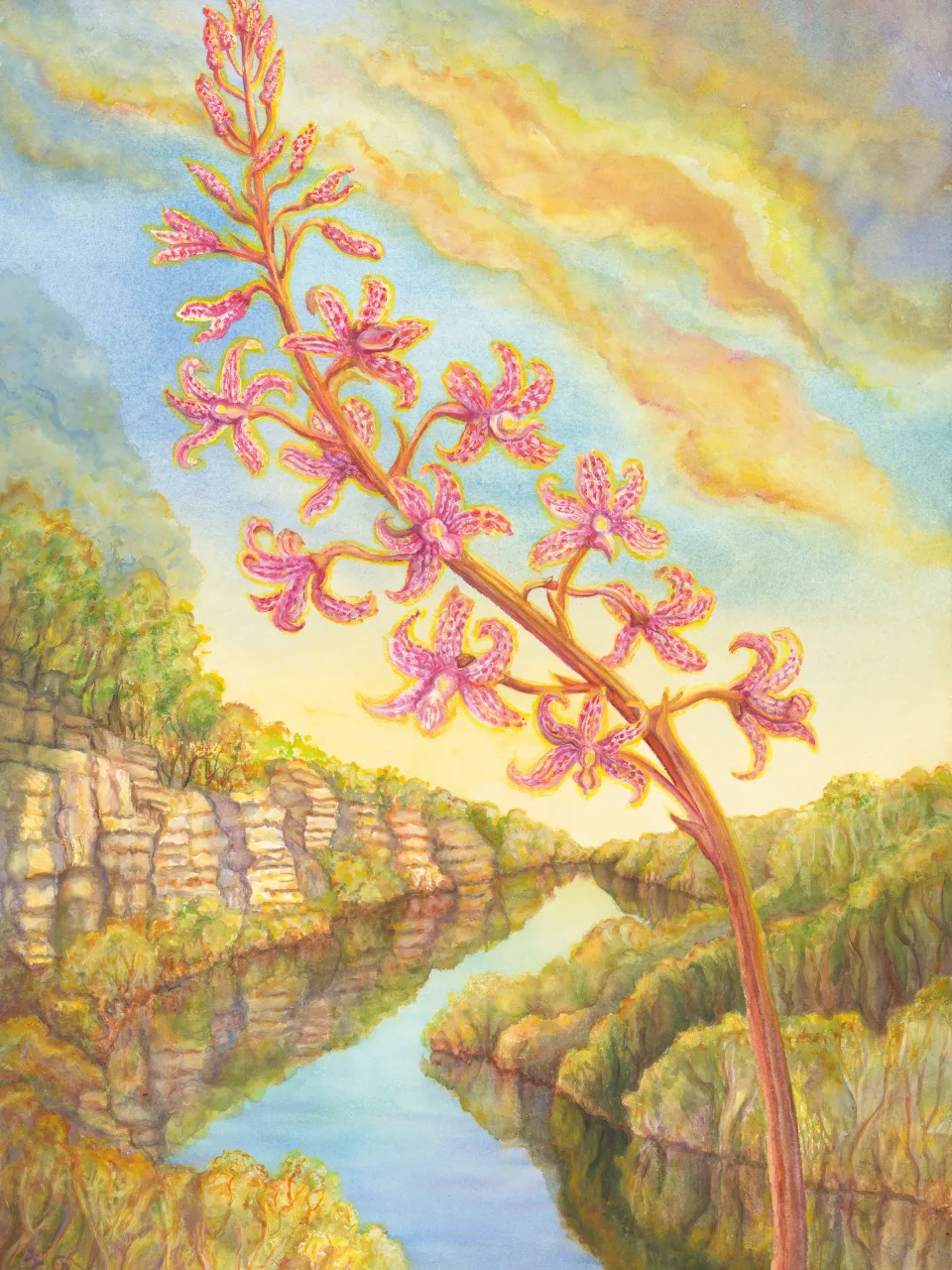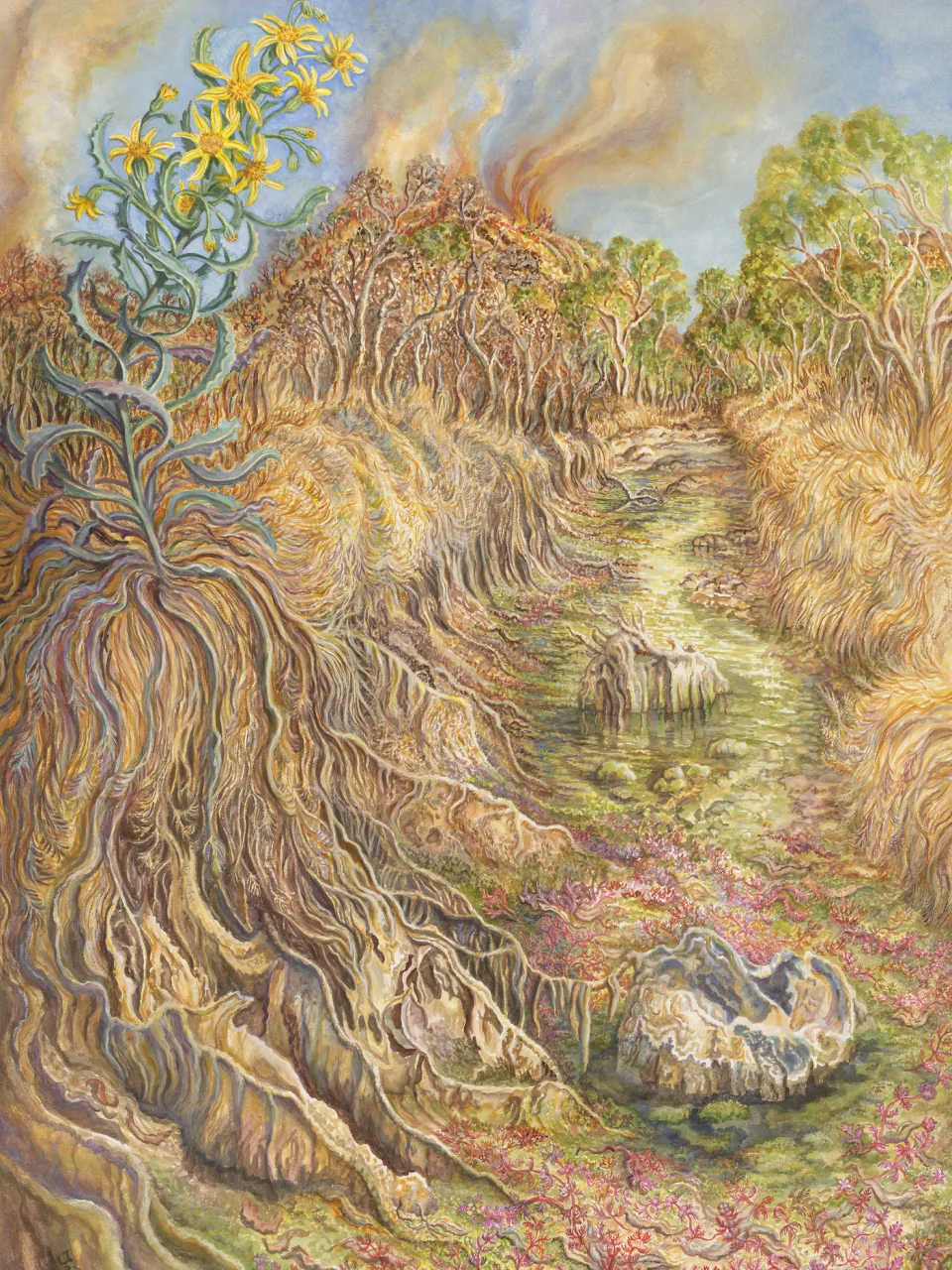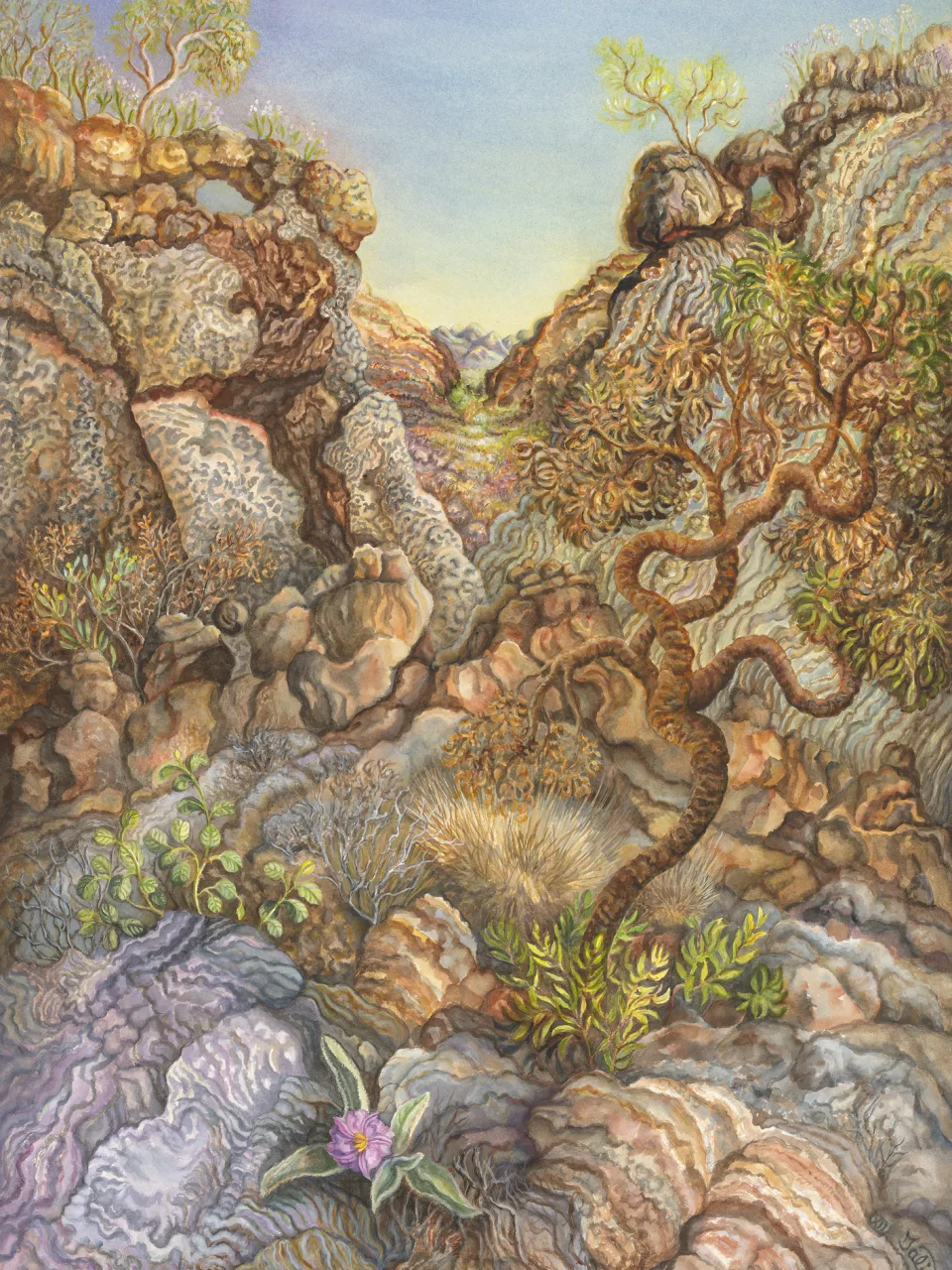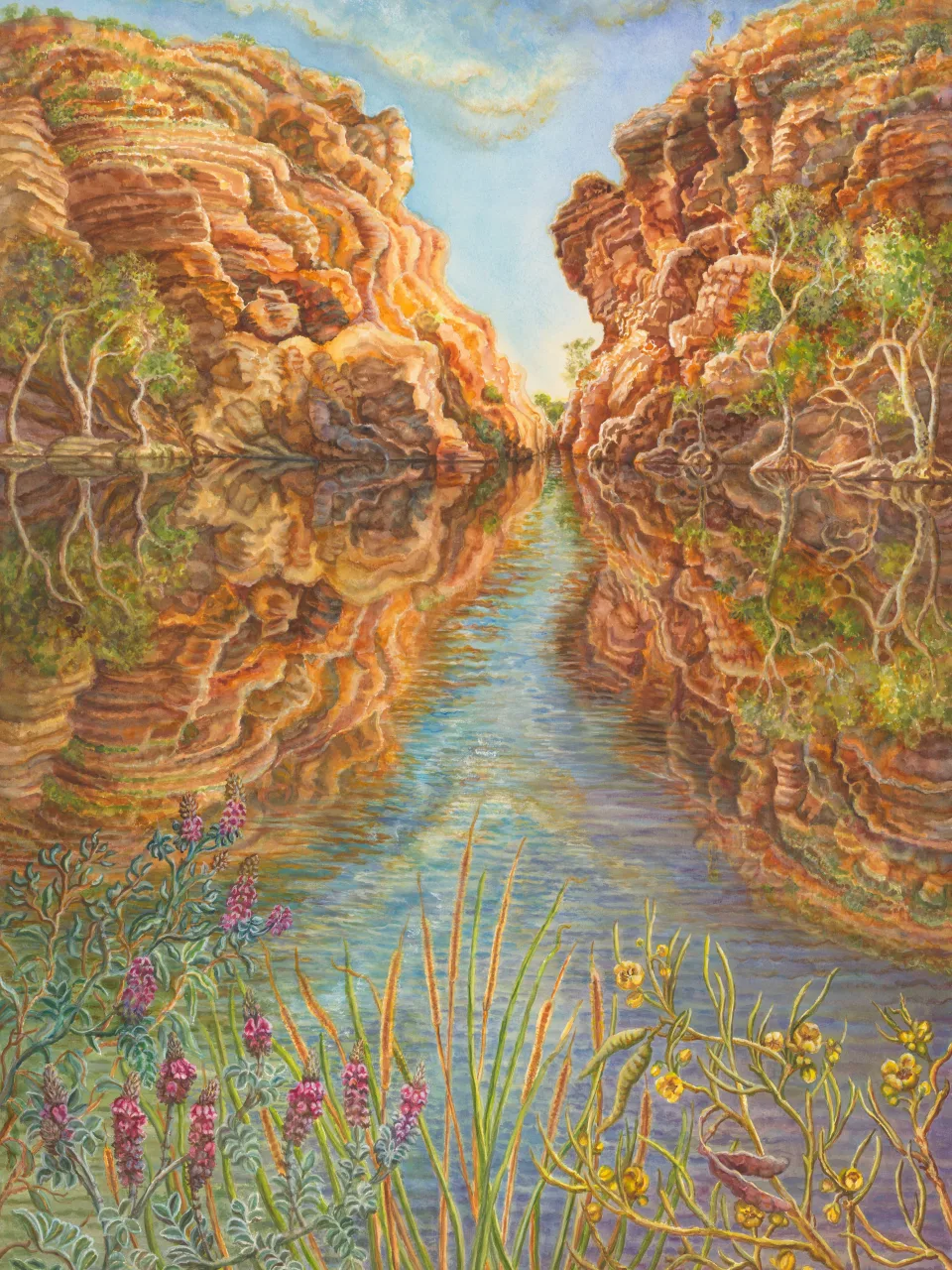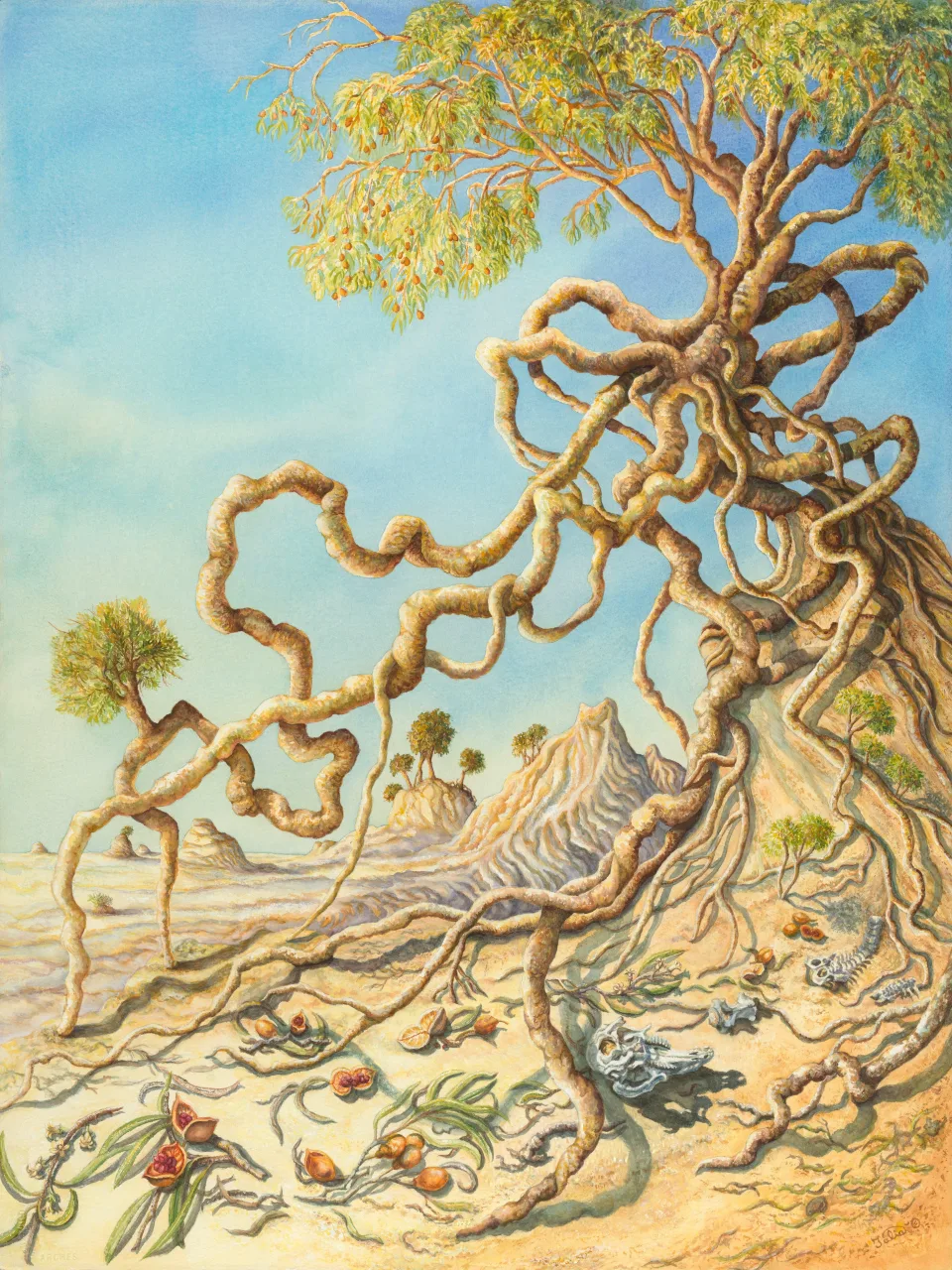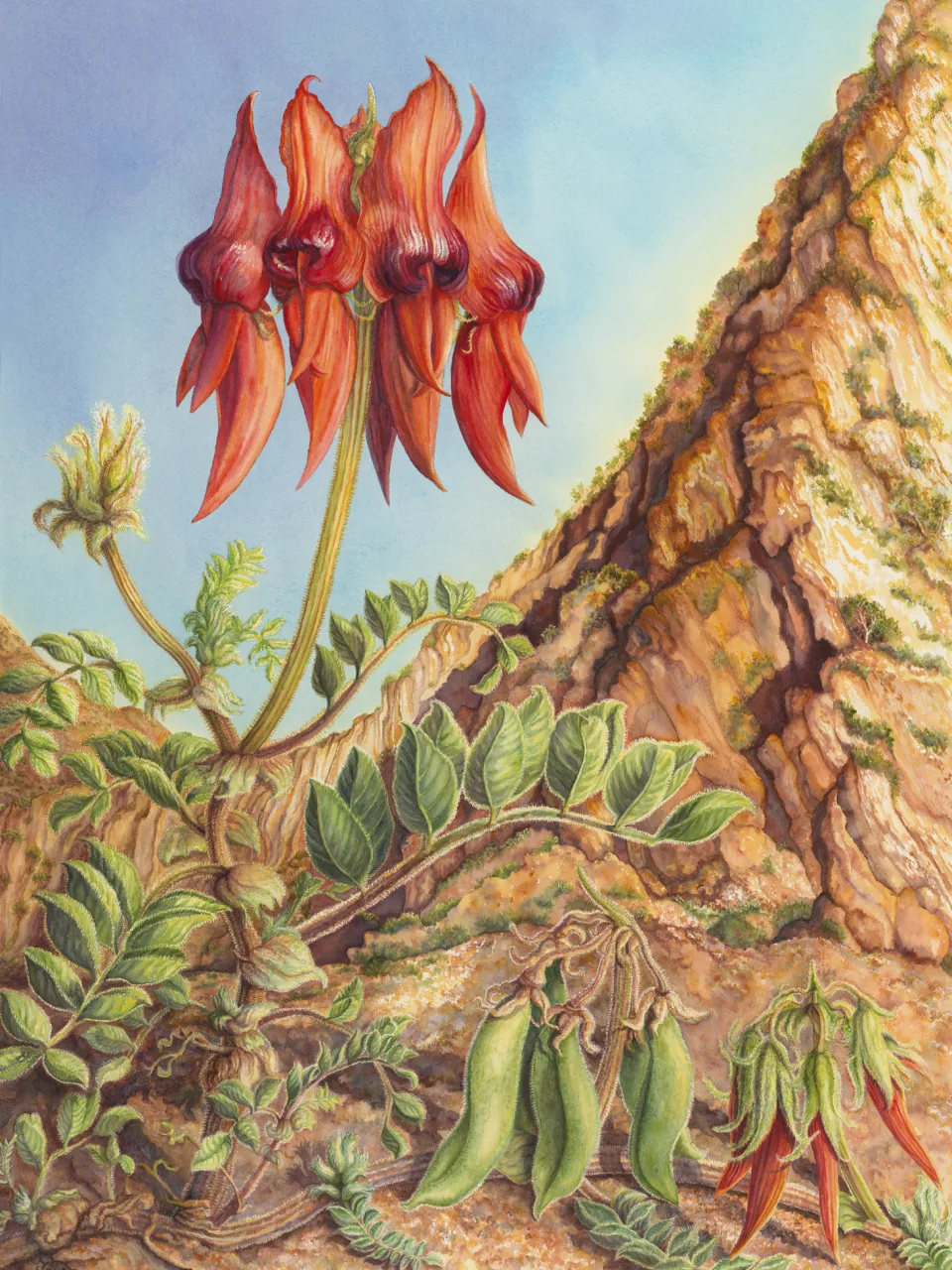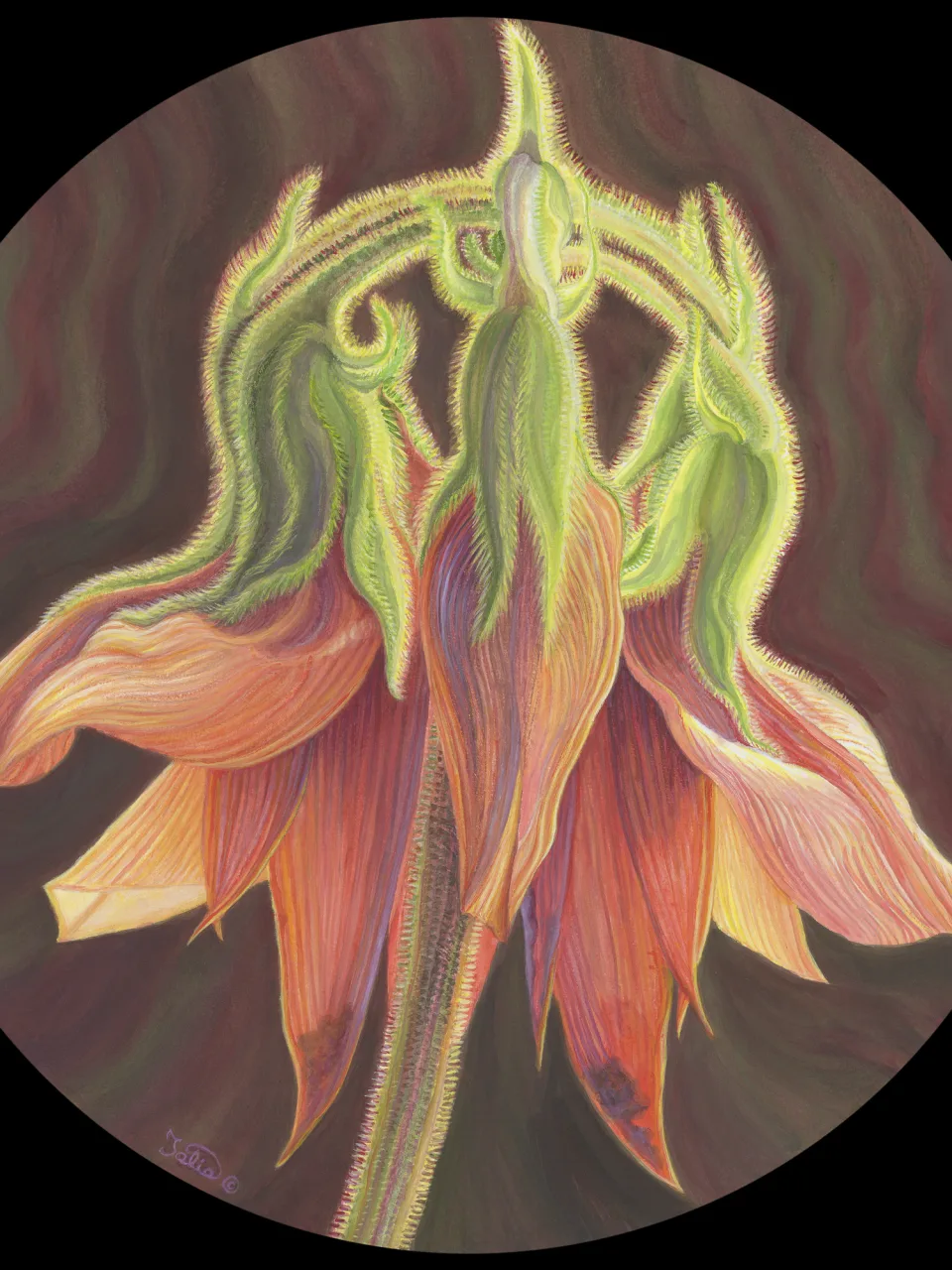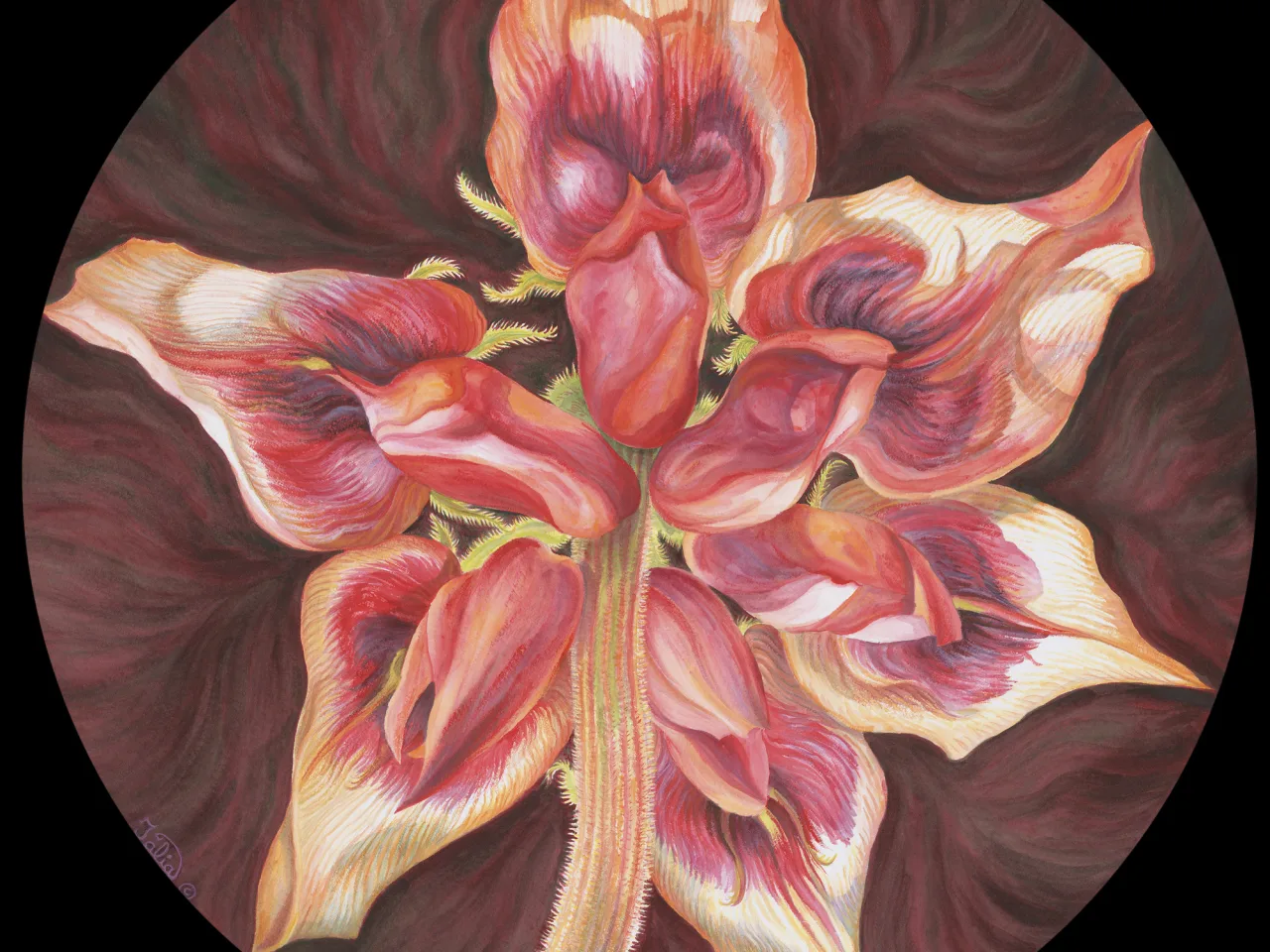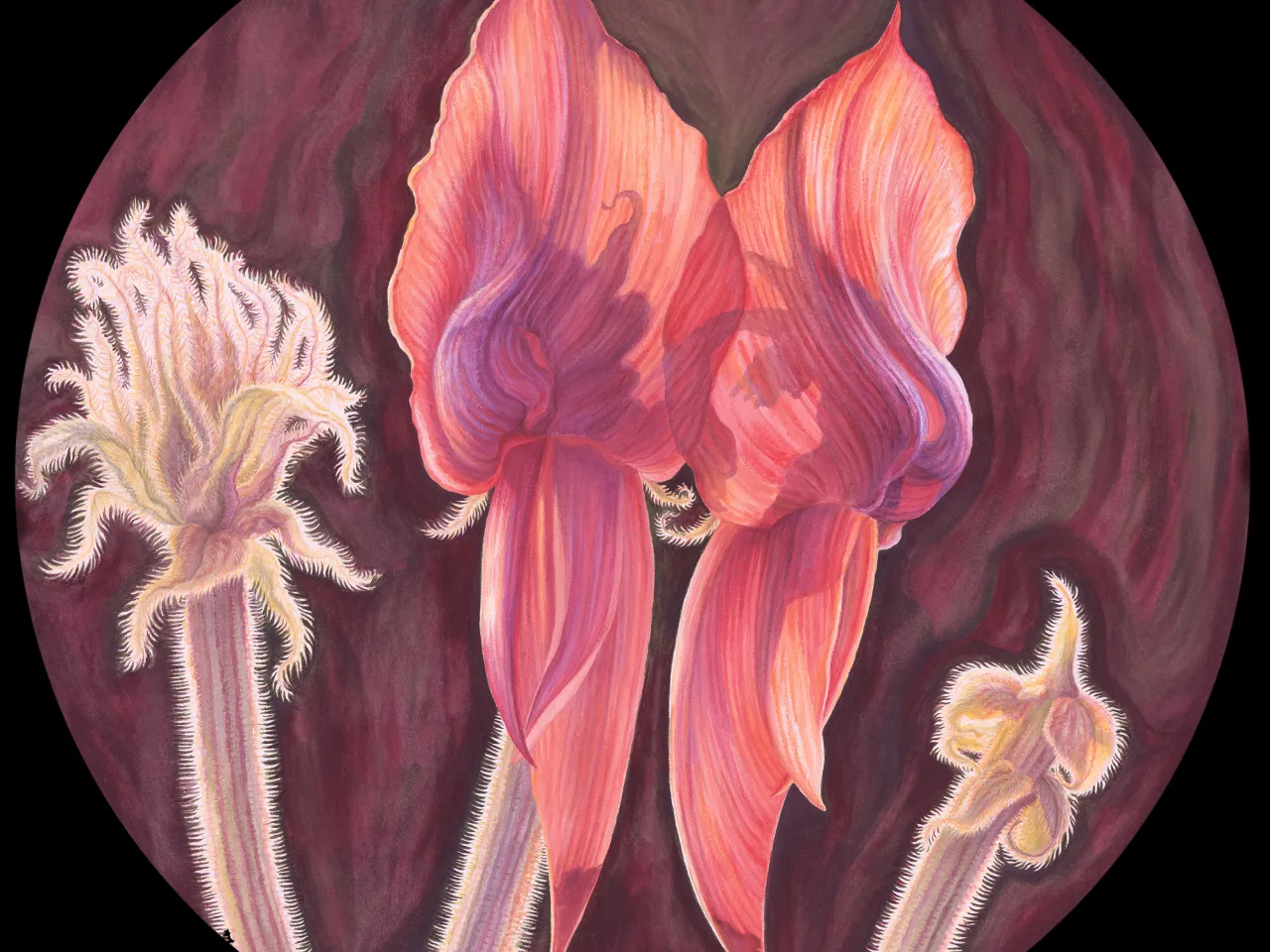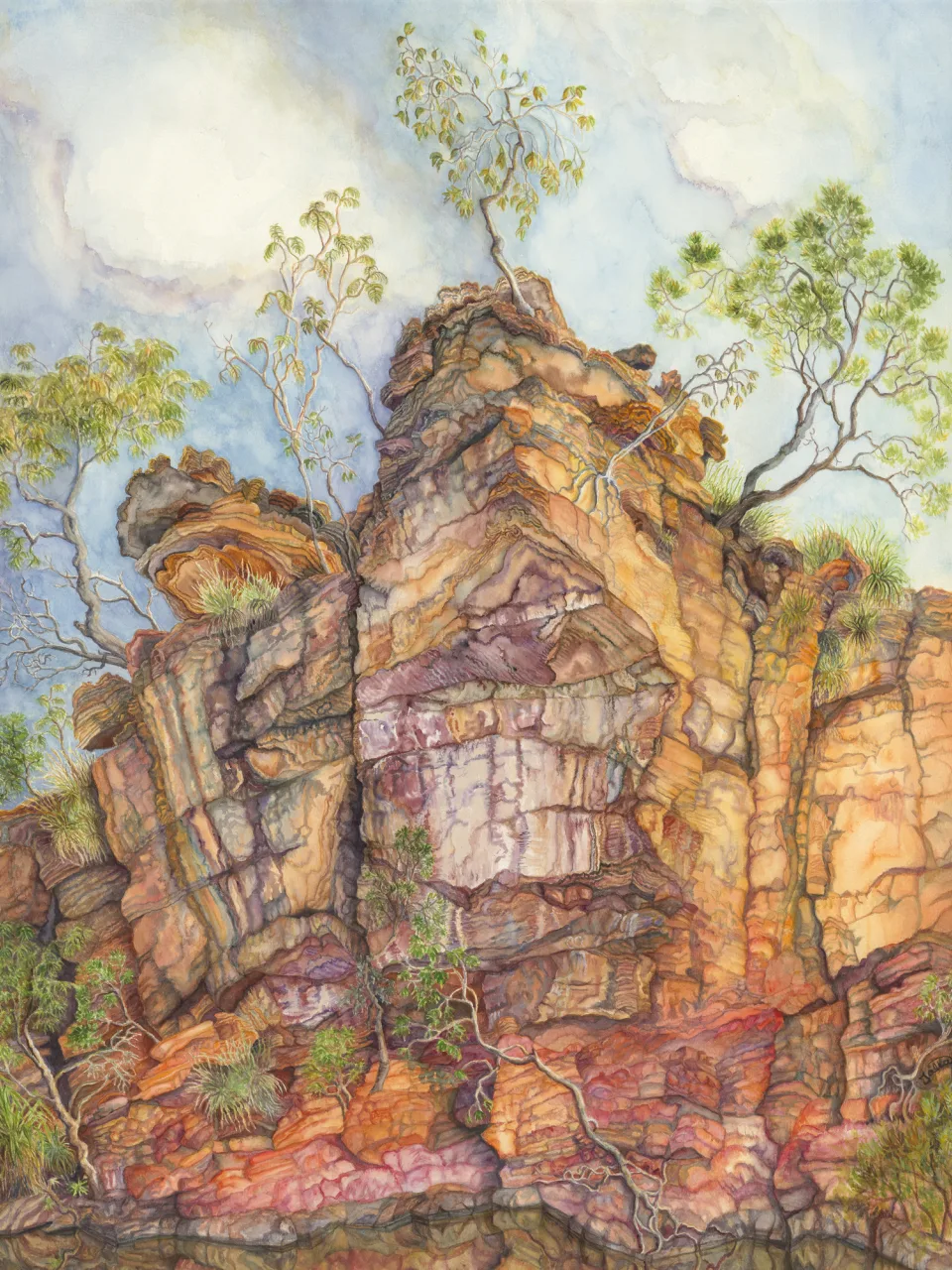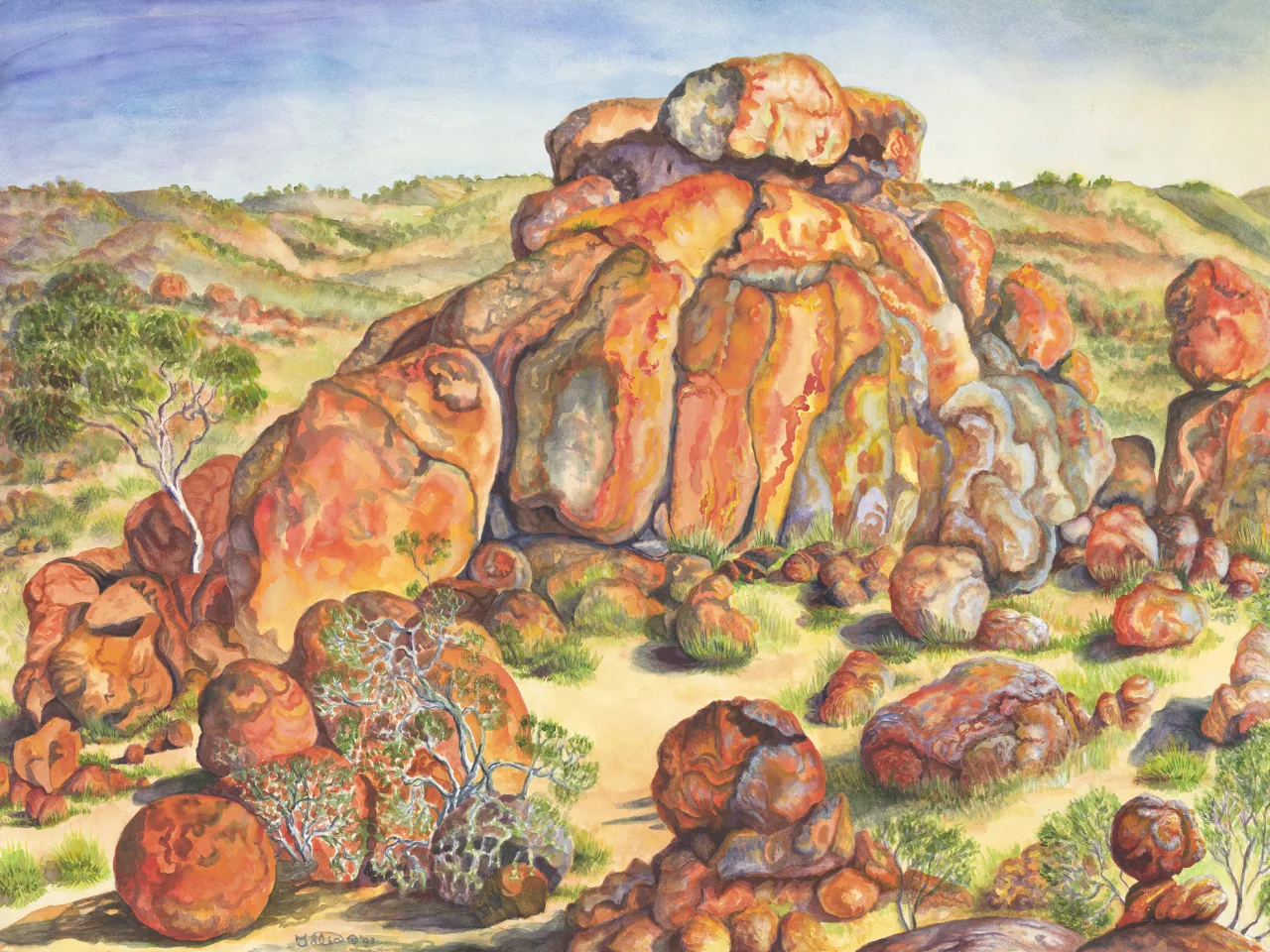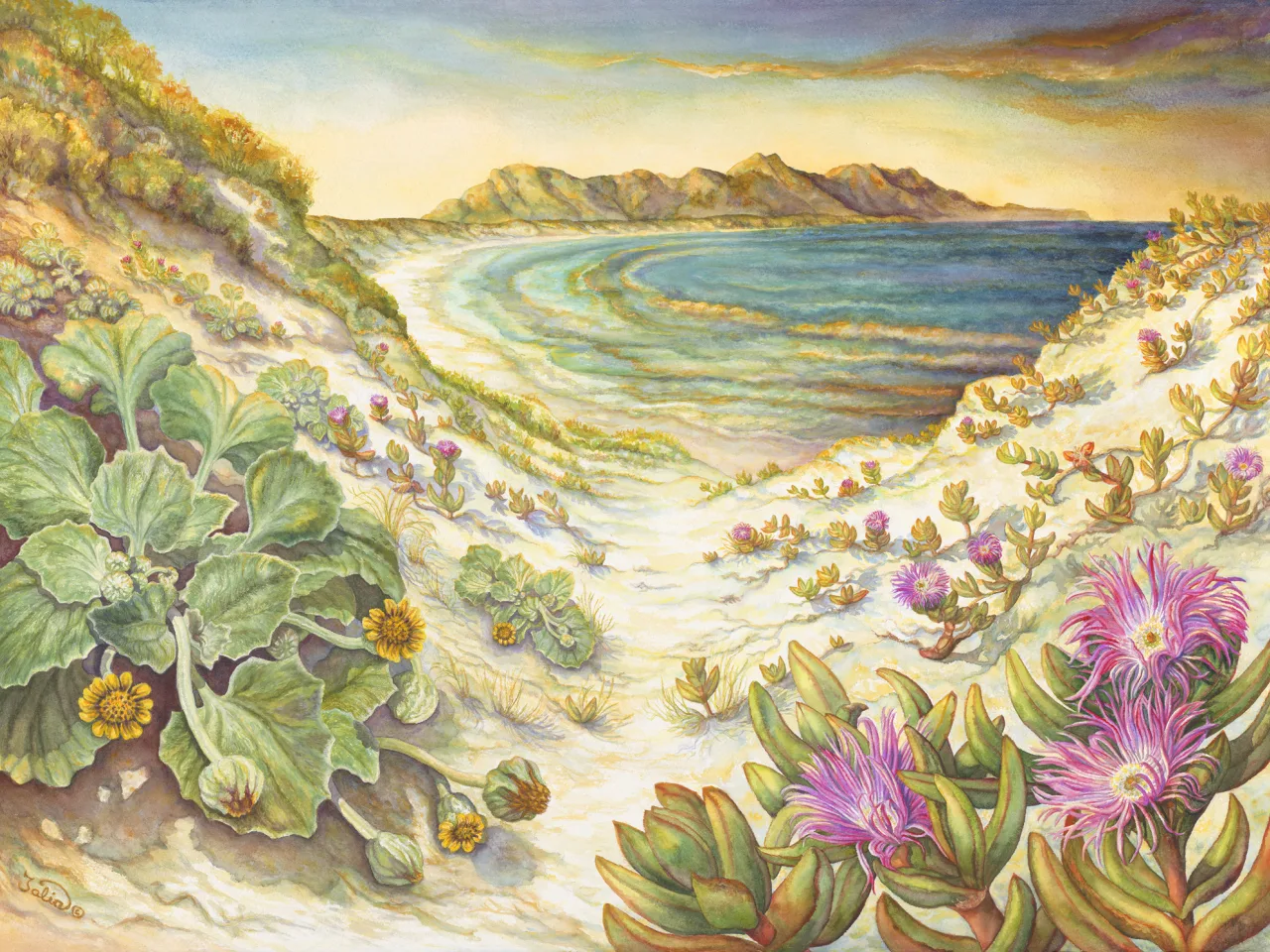Artwork 27 The Dawn Flowering Sacred Lotus
Section 21
The Sacred Lotus (Nelumbo nucifera)
Yellow Water Billabong, Kakadu National Park, Northern Territory, Northern Territory
- 1. Melaleuca sp. (paperbark)
- 2. Nelumbo nucifera (sacred lotus)
Artwork 27
Buy a print
Limited edition giclee archival quality print on 310 gsm Ilford cotton rag (from an original work in watermedia on watercolour board, 74 cm high x 54 cm wide)
from the artist
The sacred lotus flowers in my painting are opening, as they typically do, to greet the rising Sun. Here, we celebrated the Kakadu dawn with an early morning boat ride over the Yellow Water Billabong.
In this painting the open lotus flower displays rosy pink petals and numerous yellow stamens surrounding a golden central disk which reflects the shape and brilliance of the rising Sun. In the central disk seeds form at maturity (far right of the painting). As the day progresses, a warming fragrance attracts ancient beetle and fly pollinators, which become entrapped as the petals close at dusk. The tiny prisoners are kept warm by the flower at about 32 degrees Centigrade, and released the next dawn. The flowers and large circular leaves (up to a metre in diameter) are all held above the water surface by as much as 1–1.5 m, which helps attract their pollinators (Griffiths, 2009/2010, p. 16).
As with many Top End billabongs and floodplains, this body of water at Kakadu is fringed with paperbark trees. We found Nelumbo nucifera flowering on many of our visits to the Top End, from late winter to early summer and into the beginning of the Wet. I used multiple photos, sketches, and memories as the basis for this painting. Sometimes it is not possible to paint en plein air, as when an artist is confronted with serious obstacles—such as large bodies of water, mosquitoes, and saltwater crocodiles!
The lotus has some amazing properties. The wax-covered blue-green circular leaves both repel and conserve water—heavy downpours roll off, while the dished blade directs scarce water or dew down into the stalk if needed. When the large receptacle holding the ripe seeds breaks from its drying stem, it falls face down in the water, releasing the seeds into the water. There they may survive for as long as 3,000 years—and still be viable—as Mark Griffiths (2009/2010, p. 17) discovered when sent a gift of these ancient seeds from Japan, and successfully grew them. These amazing seeds contain chlorophyll, nutrients, and a cocktail of chemicals capable of repair and revitalisation during a long sleep. Griffiths’ work The Lotus Quest is a fascinating book for readers interested in the sacred lotus.
